Abstract
Job applicants should not be required as a condition of employment to profess their loyalty to partisan statements or beliefs.1 Yet universities that solicit statements of commitment to diversity, equity, and inclusion from job applicants do precisely that. Both practitioners and critics of “diversity, equity, and inclusion” (DEI) know that it entails race-conscious discrimination practices and policies. Diversity statements assess job applicants for their support—indeed, their enthusiasm—for DEI beliefs, practices, and policies, and penalize individuals who doubt, criticize, or are unfamiliar with DEI’s catechism.
Diversity statements and other mandatory commitments to DEI abridge American ideals of liberty by compelling speech wherever they are imposed. They harm institutions of higher education by crippling the academic first principle that scholars and students should pursue truth in their research, teaching, and study. Universities that mandate assent to DEI, and measure enthusiasm for DEI as a means to select applicants for university positions, replace open discussion and the search for truth with compelled speech and the search to impose DEI policies on the university and the nation.
Executive Summary
American citizens and policymakers should know just how widespread diversity statements became in American universities before President Donald Trump’s ban on DEI practices, so that they may begin to understand how universities have built and reinforced overwhelmingly progressive majorities on faculty and staff. DEI practices, including but not limited to diversity statements, have skewed faculty recruitment for decades.2 Even if universities abandoned diversity statements and other DEI hiring practices today, DEI’s legacy will persist for a generation—one reason why post-tenure review should be more widely implemented.
Ideological Insistence quantifies the prevalence of DEI statements by surveying open positions, from the janitors to the deans, on the job boards of 89 public universities across 11 states, as well as on the job boards of the eight Ivy League universities and the Massachusetts Institute of Technology. We have assembled a dataset of more than 23,000 advertised job listings. Our dataset, to our knowledge, is the single largest study of diversity statements—of ideological insistence—at American universities.
We have discovered that 86 out of the 98 American universities we investigated required diversity statements for at least some job positions. Such mandates were most frequently applied to job advertisements for faculty positions and for upper-level administrative positions such as Dean or Vice Provost. The western, progressive states of California, Washington, and Oregon seem to impose DEI statements most frequently, followed by slightly less progressive states such as Illinois, New Mexico, or Maryland. More conservative states, such as Ohio, South Carolina, and Texas, imposed DEI statements less frequently—but even in more conservative states, institutions such as Central State University in Ohio or Coastal Carolina in South Carolina imposed DEI statements as frequently as did the most progressive campuses in highly progressive states. Throughout America, both in progressive and in conservative states, flagship state schools such as the University of Illinois Urbana-Champaign tended to impose DEI Statements much more frequently.
Ideological Insistence provides a roadmap for state or federal officials seeking to end ideologically motivated discrimination in university hiring. Mandatory diversity statements are not atypical, but ordinary: colleges and universities impose diversity statements on massive numbers of job applicants. Universities are currently in various stages of rolling back or retrenching DEI, but policymakers should act to ensure reform. Federal and/or state bans on DEI practices, including diversity statements, stipulating enforcement mechanisms, and conditioning state funding upon compliance with bans, would be an effective means to depoliticize universities and restore them to their American and academic ideals of free speech and open inquiry. Such bans, moreover, would be a good model for further federal and state action to protect job applicants in all sectors of the economy from being compelled to assent to, or even mimic enthusiasm for, the race-discrimination policies of DEI.
Introduction
American institutions of higher education extol the ideology of "diversity, equity, and inclusion" (DEI). The University of Oregon proclaims in its Core Values statement that, “we value our diversity and seek to foster equity and inclusion in a welcoming, safe, and respectful community.”3 The Vision of the University of Michigan, is “to be an equitable, inclusive culture.”4 The University of Washington values diversity second only to integrity, and before excellence.5
“DEI” usually refers to practices or policies which are conscious of—more forthrightly which discriminate on the basis of—race, sex, or other social categorizations. Most Americans first heard of DEI in 2020, during the riots after the death of George Floyd, but DEI’s underlying practices and policies originated during the Civil Rights era. In 1962, John F. Kennedy signed Executive Order 10925, mandating that federal government contractors "take affirmative action" to ensure equal employment opportunities for all applicants and employees, regardless of race, creed, color, or national origin. This attempt to reverse the effects of segregation, however, quickly developed into discriminatory systems of selection or participation based on group identity. Higher education institutions have been among the most zealous practitioners of such ‘affirmative’ preferencing ever since the 1960s.
The first notable legal challenge to affirmative action, Bakke vs Regents of the University of California (1978), put an end to explicit racial quotas in academic admissions–but the stray use of the word “diversity” in Justice Lewis Powell’s opinion gave colleges and universities a new euphemism and rationale by which to camouflage race and sex preferences. Public backlash against ‘positive’ discrimination reached its zenith in the 1990s, when several state ballot initiatives such as California’s Proposition 209 banned state governments, including public universities, from using race preferences.6 Race discrimination enthusiasts responded to the vox populi by rebranding rather than removing their programs and policies. Strategic use of the concept “diversity” provided one evasion. In the 1990s, critical legal theory, post-colonial studies, and other postmodern movements also began to provide the terminology and policy goals of identity politics as a way to reinvent affirmative action’s race discrimination methods as diversity, equity, and inclusion–race discrimination compounded by increasingly coercive policies both to prohibit speech or policies that criticize race discrimination, much less seek to revoke it, and to subordinate all other activities to the protection and extension of race discrimination. ‘Positive discrimination,’ renamed as DEI, has flourished since, and its repertoire has expanded to include practices such as implicit bias testing and diversity statements.
Ideological Insistence does not focus upon chronicling DEI’s history or surveying its cornucopia of practices. We seek rather to gauge the prevalence of one particular practice: colleges and universities’ use of diversity statements. “Diversity statements” are any type of test whereby job candidates are judged based on commitment to the concept of diversity, equity, and inclusion. Institutions that condition employment on a job applicant’s ‘commitment to diversity, equity and inclusion’ makes loyalty to, enthusiasm for, and successful practice of an ideological catechism a condition of employment. DEI, which requires assent to the belief that one should discriminate on the basis of race, sex, or other characteristics to correct “disparities” or promote “equity,” is a blatant example of what the American Association of University Professors refers to, as a practice to be avoided, as a “particular opinion upon a controverted question.”7
To make employment conditional on commitment to a partisan opinion also violates academic freedom at non-denominational institutions–and, above all, at public institutions. As the AAUP eloquently put it, when an institution of higher learning holds prescribed opinions upon a controverted question, it diminishes “genuine boldness and thoroughness of inquiry, and freedom of speech.”8 Colleges and universities that solicit adherence to a “specific doctrine” such as DEI risk becoming quasi-denominational institutions: “They do not, at least as regards one particular subject, accept the principles of freedom of inquiry, of opinion, and of teaching; and their purpose is not to advance knowledge by the unrestricted research and unfettered discussion of impartial investigators.”9 True denominational colleges and universities are a jewel in American education–but they state their beliefs forthrightly, and generally their faith is not in the idol of race and sex discrimination on earth as the highest spiritual good.
DEI, however, does not just endorse race and sex discrimination. DEI relies on a series of particular and narrowly held historical, moral, and metaphysical claims. These include a postmodern understanding of society in terms of power differentials, and stemming from this, a philosophical anthropology rooted in group identity. DEI’s metaphysics, moreover, runs counter to America’s founding legal and social conception of people as individuals who cannot be reduced to identity groups such as race and sex. Colleges and universities that solicit commitment to DEI solicit commitment to views which are not merely narrowly particular, and not merely broadly unpopular, but which actively undermine America’s founding ideals. Nor can the advocates of DEI even claim that their ends have justified their means. Sixty years of increasing institutional race-consciousness have worsened race relations, not improved them.10 Nor has the fevered search for “equity” provided actual improvement: gains in black real household wealth since the imposition of race discrimination programs have been marginal.11 America has sacrificed its ideals of liberty, individual merit, and equal opportunity to no good purpose.
How DEI Statements Work
When universities ask applicants for a statement detailing their beliefs about and experience with DEI theory and practices, they expect candidates to catalogue their support for DEI in word and deed. In UC Berkeley’s Rubric to Assess Diversity, Equity, and Inclusion (DEI) Statements, for example, a candidate receives a 1 out of 4 points who:
Seems not to be aware of, or understand the personal challenges that underrepresented individuals face in academia, or feel any personal responsibility for helping to eliminate barriers. For example, may state that it's better not to have outreach or affinity groups aimed at underrepresented individuals because it keeps them separate from everyone else, or will make them feel less valued.12
The second sentence explicitly penalizes the applicants for holding an opinion opposed to DEI ideology. Indeed, the Berkeley Rubric penalizes job applicants for holding any opinion contrary to DEI ideology. Job applicants, after all, could disagree with DEI methods or DEI goals for any of a large number of reasons–including disagreeing with DEI methods as a counterproductive means of achieving DEI goals. The Berkeley Rubric makes clear that diversity statements, despite their proponents’ claims to the contrary, close conversations rather than opening them. The Berkeley Rubric is nothing more than a DEI blacklist. And Berkeley’s Rubric, we should underscore, is the national standard that DEI bureaucrats in American colleges use to assess whether their own DEI statements are up to snuff.13
In theory, a “bad” diversity statement need not sink a job application. Hiring committees decide how much weight to give DEI statements within job applications. In practice, “good” diversity statements are indispensable components of successful job applications. Hiring committees generally give substantial weight to DEI statements within the package of required components for a job application.
At Ohio State University, for example, an Astrophysics search committee noted that “the DEI statement was given equal weight to the research and teaching statements.” Ohio State’s Biological Anthropology search committee used the following weighting: “55% research (curricular fit, potential and productivity, future plans), 20% DEI, 20% teaching, 5% service. As such, DEI practices and experience were considered on the same level as teaching in this search.”14 A low DEI score very likely will sink a candidate’s application. Ohio State’s Architecture and the Built Environment search committee wrote of one applicant: “Very strong research profile in a desirable area for the department…. Fantastic writing sample. He blew the interview with his DEI answer, however, which was disqualifying (all on the committee agreed on this).”15 Graduate schools, which realize how vital these statements are for getting academic positions, now offer DEI statement review services to graduate students on the academic job market.16
This Study’s Contribution
Education reformers’ critiques of diversity statements and other mandatory affirmations of DEI ideology usually have focused on a single institution. These critiques therefore have not yet allowed policymakers and the public to quantify the extent and intensity of college and university use of diversity statements. Ideological Insistence gives American citizens and policymakers an answer to the question, just how many colleges and universities use diversity statements? And it answers the natural follow-up question, how intensively do these institutions use them?
Ideological Insistence answers these questions by collecting data on almost every open position, from deans to janitors,17 advertised on the job boards of 98 institutions—89 public universities across 11 states, all eight Ivy League institutions, and the Massachusetts Institute of Technology (MIT). In total, our dataset includes more than 23,000 job listings advertised on these 98 universities’ official job boards. To the best of our knowledge, Ideological Insistence is the largest study to date on DEI statements in American higher education hiring practices.
The full list of the universities we surveyed, listed by state, is:
California
- California Polytechnic State University
- California State University
- Humboldt State University
- San Francisco State University
- University of California - Berkeley
- University of California - Los Angeles
- University of California - Merced
- University of California - Riverside
- University of California - San Diego
- University of California - Santa Barbara
Illinois
- Chicago State University
- Eastern Illinois University
- Northeastern Illinois University
- Southern Illinois University - Carbondale
- University of Illinois - Chicago
- University of Illinois - Springfield
- University of Illinois - Urbana-Champaign
Maryland
- Bowie State University
- Frostburg State University
- Morgan State University
- Towson University
- University of Maryland - Baltimore County
- University of Maryland - College Park
- University of Maryland - Global Campus
Michigan
- Central Michigan University
- Ferris State University
- Grand Valley State University
- Lake Superior State University
- Michigan State University
- Northern Michigan University
- University of Michigan - Ann Arbor
- University of Michigan - Flint
- Wayne State University
- Western Michigan University
- Western Michigan University - Homer Stryker M.D. School of Medicine
Nebraska
- Chadron State College
- University of Nebraska - Kearney
- University of Nebraska - Lincoln
- University of Nebraska - Medical Center
- University of Nebraska - Omaha
- Wayne State College
New Mexico
- Eastern New Mexico University
- New Mexico State University
- University of New Mexico
- Western New Mexico University
Ohio
- Air Force Institute of Technology
- Bowling Green State University
- Central State University
- Kent State University
- Miami University
- Ohio University
- Ohio State University
- University of Cincinnati
- University of Toledo
- Wright State University
Oregon
- Eastern Oregon University
- Oregon Institute of Technology
- Oregon State University
- Portland State University
- Southern Oregon University
- University of Oregon
- Western Oregon University
South Carolina
- Clemson University
- Coastal Carolina University
- University of South Carolina
Texas
- Prairie View A&M University
- Sam Houston State University
- Stephen F. Austin State University
- Sul Ross State University
- Tarleton State University
- Texas A&M University
- Texas Southern University
- Texas Southmost University
- Texas State University
- Texas Tech University
- University of Houston
- University of North Texas
- University of Texas - Austin
- University of Texas - El Paso
- University of Texas - Houston
- University of Texas - MD Anderson
- University of Texas - Medical Branch
- University of Texas - San Antonio
- University of Texas - Southwestern
- University of Texas - Tyler
Washington
- Central Washington University
- Eastern Washington University
- University of Washington
- Washington State University
Ivy League (and MIT)
- Brown University
- Columbia University
- Cornell University
- Dartmouth College
- Harvard University
- The Massachusetts Institute of Technology
- Princeton University
- University of Pennsylvania
- Yale University
Methodology and Limitations
We collected data October 17, 2024 – November 26, 2024. Once we completed data collection, we examined (programmatically parsed) each HTML file (i.e., each job listing) for key DEI phrases diagnostic of a diversity statement requirement.
At first our programmatic parsing tools only worked about half the time. A phrase that indicated a DEI statement requirement would be flagged in one file, but not the next one. We then changed the filter from short phrases to key words, such as ‘diversity,’ ‘diverse,’ ‘equity,’ ‘equitable,’ ‘inclusion,’ and ‘inclusive.’ This broader filter worked properly to flag every file with a DEI keyword, but left us with many positive results where the textual evidence did not necessarily indicate a diversity statement requirement. As we began to separate these false positives from the true positives, we then discovered just how many ways university hiring authorities required affirmation of DEI practices without directly asking that the applicant submit a written diversity statement.
Some jobs listings, for example, stated that the candidate would be asked about his orientation toward DEI, but that the institution would not ask for a more traditional, written diversity statement. Others specified that DEI was very important to the department’s mission, and that they were looking for candidates who expressed DEI commitment throughout their application. While these job listings obviously solicited applicants to endorse a narrow practice or ideology, we hesitated about whether to classify requirements such as experience teaching a “diverse” student population as commitments to DEI ideology, because “diverse” was not always explicitly clarified to refer to race and sex.
We discussed extensively where to draw the line between a true positive result, where it seemed that the applicant was being asked to affirm DEI practices, and a false positive result (designated as negative), where our parsing tool flagged a DEI keyword, but the textual evidence did not meet our threshold, with the question we constantly asked ourselves being:
Is it more likely than not that, based on the textual evidence, an applicant might reasonably be expected to affirm DEI ideology and associated practices, in some form or fashion, during their application process?
We decided on a case-by-case basis which job postings reasonably could be judged to give an affirmative answer to this question, although we did develop several general guidelines. For example, we did not count DEI affirmation by the university or university campus as a whole, since this appeared most often as boilerplate language and there are too many degrees of separation between the applicants / hiring managers and the administrators who wrote those statements. Nor did we count job postings that generically invoked “diverse” or “diversity,” unless the phrasing either directly stated or at least hinted at identitarian notions of “diversity,” or additional evidence in the job listing indicated that the applicant would be expected to affirm DEI practices. If an individual department published its own DEI affirmation, however, we took this as evidence that one could reasonably conclude that departmental hiring committees would scrutinize job applicants to these departments to see whether they met the department’s own affirmation of DEI practices.
We did our best to apply these rules sensibly and consistently throughout each dataset as we worked to distinguish true positive results from false positive results, but the ambiguity of certain cases continually provoked discussion. Take, for example, Harvard file 478. Here, the job posting informed the applicant that he was expected to maintain a “high sensitivity to diverse cultural needs of students” and to “recognize multicultural value systems and works accordingly.” Generally, expectations of applicants to work well with “diverse cultures” or “diverse backgrounds” were designated as negative results (i.e., false positive results), but the language in Harvard 478 seemed more tendentious, and tempted us to designate it as positive. Yet we ultimately designated Harvard 478 as a negative (false positive) result, since the job advertised was International Student Advisor, a position which requires work to provide “immigration advising and support in the areas of pre-arrival guidance, orientation, and cultural adaptation” for foreigners attending college in the United States. Harvard 478’s language, in context, seemed reasonable, and not likely to indicate DEI practices.
We also debated Harvard files 57 and 86 (statistics and mathematics departments), both of which stated that “[the department] celebrates the multiple dimensions of diversity that each member of our community offers, including diversity of background, perspective, and lived experience.” On one hand, this language seemed to be the type of diversity boilerplate that we almost always designated as a negative result. On the other hand, “lived experience” seemed to indicate a more radical approach to DEI.
Harvard file 131 ended our debate. That job listing, a postdoctoral fellowship in computer science, a field closely related to statistics and mathematics, simply stated that the department is “committed to diversity in perspectives, in methods, and in our student, researcher, and faculty populations.” We reasoned that if the department of computer science could get away with such a generic departmental diversity statement—and if it could manage to place “perspectives” at the top of their diversity list, and exclude “background” entirely—then the departments of statistics and mathematics had chosen to promulgate more DEI-aligned departmental statements. We therefore marked Harvard 131 as a negative result and Harvard 57 and 86, with this new contextual knowledge, as positive results.
Other researchers may disagree with our decision. The very next sentence in Harvard 131, after all, states: “We strongly encourage applications that would bring additional dimensions,” presumably of diversity, “to the university’s research and teaching missions.” This wording might be a strong hint that the hiring committee would use diversity considerations to judge applications. Yet our diagnostic question focused on whether it was more likely than not, based on the textual evidence, that an applicant would be expected to affirm DEI practices. Just because the department indicates that it will apply DEI ideology to its hiring decisions does not necessarily indicate that the applicant will be expected to affirm DEI ideology.
There were many other job listings we marked as positive that gave no textual indication that the applicant would be required to affirm DEI practices. We judged that such a requirement did not need to be stated explicitly, as these positions were either in or under an office of Diversity, Equity, and Inclusion. We believe it is reasonable to judge as positive results all job listings for departments and offices which themselves are dedicated to DEI.
We know that our study cannot assess what hiring committees do that is not put in writing in a job listing. A hiring committee can ask a question during an interview about DEI commitment, whether or not the job posting requires that commitment. Hiring committees also can communicate DEI commitment requirements by other means than the public job posting. The reverse is also true: we do not know which positions we marked as positive where the hiring committees or managers will downplay DEI requirements in practice, because they included such language in the job postings simply to appease DEI administrators. We also cannot be sure if our sample, while certainly one of the largest ever collected, is a reasonably accurate representation of the higher education job market, since we collected our data late in the fall semester, near the middle of the typical academic year.
We have attempted to err on the side of caution. We believe that our procedures have made us more likely to undercount than to overcount DEI requirements in higher education job postings. Readers should take our numbers as a floor: we suspect that the true amount of DEI-commitment in American colleges and universities’ job requirements is substantially higher than the numbers we provide here. But we have attempted to base our quantitative study on solid textual warrant, and on a determination to judge ambiguous evidence as favorably as possible.
The following sections discuss and represent visually the distributions of “positives” (i.e., those job listings which appeared to us more likely than not to insist upon commitment to DEI ideology) and “negatives” (i.e., those job listing which either had no evidence that they required commitment to DEI ideology, or where the evidence did not meet our inclusion criteria) in each of the 11 states, the Ivy League, and MIT. We have included job listings for both faculty and staff. We designated all job listings for professors, instructors, lecturers, and teaching assistants as faculty. We designated all job listings for academic research positions, administrative positions, and general staff positions as staff. We generally designated academic deans and department heads as staff, since their departmental roles are largely administrative, but we designated the position as faculty when the job title included teaching responsibilities (e.g., “Department Chair and Instructor” or “Full Professor and Dean of XYZ”).
Results
California
Figure 3.1
| College or University | Percentage of DEI positive postings |
| California Polytechnic State University | 140 / 187 (75%) |
| California State University | 670 / 1044 (64%) |
| Humboldt State University | 6 / 70 (9%) |
| San Francisco State University | 39 / 64 (61%) |
| University of California - Berkeley | 148 / 185 (80%) |
| University of California - Los Angeles | 1 / 189 (<1%) |
| University of California - Merced | 21 / 180 (12%) |
| University of California - Riverside | 38 / 175 (22%) |
| University of California - San Diego | 16 / 516 (3%) |
| University of California - Santa Barbara | 123 / 232 (17%) |
| Total | 1235 / 2842 (43.45%) |
California had the third highest overall percentage (approximately 43.45%) of DEI statement usage among the states surveyed - 1,235 out of 2,842 job listings collected from the ten California universities surveyed registered positive results. This result should not surprise. California’s public universities during the last two generations have engaged in some of the most aggressive uses of racial discrimination. This continues to be the case, in spite of the state’s contentious history with affirmative action practices. The first legal challenge to affirmative action, Bakke vs California Board of Regents in 1978, started at UC Davis. In Bakke, the Supreme Court determined that racial quotas, or setting aside seats for members of certain races, was illegal, but permitted the use of race as a factor in admissions, for the purpose of promoting “educational diversity.” Nationally, the Bakke decision gave universities a green-light to expand the use of race-conscious policies, thus swelling the ranks of race-discrimination administrative offices.
In California, popular backlash against race-conscious admissions reached a head in 1996, when a state-wide ballot initiative, the California Civil Rights Initiative or Proposition 209, banned affirmative action admissions practices. Proposition 209, which made California the first state to enact a statutory ban on race discrimination policies such as affirmative action, applied to the University of California (UC) and California State University (CSU) systems. Today California universities generally maintain pages on their websites professing compliance with Proposition 209.18Skeptics may wonder whether these universities’ compliance is more than pro forma. Yet even if we take California’s universities to follow the letter of Proposition 209, they have found workarounds to allow them to engage in positive discrimination.19
The University of California’s President’s Postdoctoral Fellowship Program (PPFP), for example, founded in 1986 to recruit “women and minority Ph.D. recipients,” continues that work to this day.20 PPFP seeks not just “diverse” scholars, but scholars who will “enhance the university’s commitment to diversity”—in other words, scholars who share the program’s commitment to DEI. In Bakke, Justice Powell recommended educational diversity to prevent a “pall of orthodoxy” from descending on the classroom. The research topics of the current PPFP fellows definitively suggests such a pall: research topics include “The Sacred Geographies of Everyday Black Feminist Healing Arts in Oakland, California” and violent black rebellion.21 All twenty one of the PPFP fellows in the humanities pursue scholarship similarly focused on group identity.22
The prevalence of diversity statements in California job postings indicates the importance of DEI ideology in California’s public university administration. UC Berkeley, for example, whose public statements have expressed an extraordinary commitment to DEI even by the standards of American higher education, also has the highest diversity statement percentage in our California sample. In 2021, UC Berkeley’s Division of Equity and Inclusion employed 400 full and part-time staff, at an annual cost to the university of $25 million.23 UC Berkeley, unfortunately, has been a terribly influential model for disseminating DEI statements to its peer institutions. As noted above, DEI offices around the country cite, or simply copy, UC Berkeley’s Rubric to Assess Diversity, Equity, and Inclusion (DEI) Statements.
DEI appears ubiquitous in California’s public institutions, but UCLA’s recent history provides Americans hope that DEI repeal can be swift and total, even in states like California. In September 2023, the New York Times published an article detailing how UCLA had denied a faculty position to psychology professor Yoel Inbar, because he had expressed reservations about diversity statements.24 Journalists Christopher Rufo and Aaron Sibarium then turned public attention to UCLA’s DEI-related practices more generally: Rufo published a story providing evidence that a UCLA DEI administrator had committed plagiarism, and Sibarium reported on the egregious uses of race preferences at UCLA’s medical school.25 UCLA since then appears to have ceased using diversity statements, and indeed appears to be reducing all of its DEI efforts. This story of UCLA’s about-face should give Americans hope that universities, even those that appear intensely committed to DEI, can be induced to reform by external media scrutiny and public opinion.
We collected data on a total of 2,842 job listings from ten California universities. We could not collect large enough samples from each university to allow us to provide informative institution-specific analyses for every institution we surveyed. We have provided visual representations of the results for institutions where we could collect large enough samples–where the number of job listings was 250 or greater, including substantial numbers of both faculty and staff. We also have provided visual representations of the data for California and for the overall data from the UC and CSU institutions we surveyed.
Figure 3.2
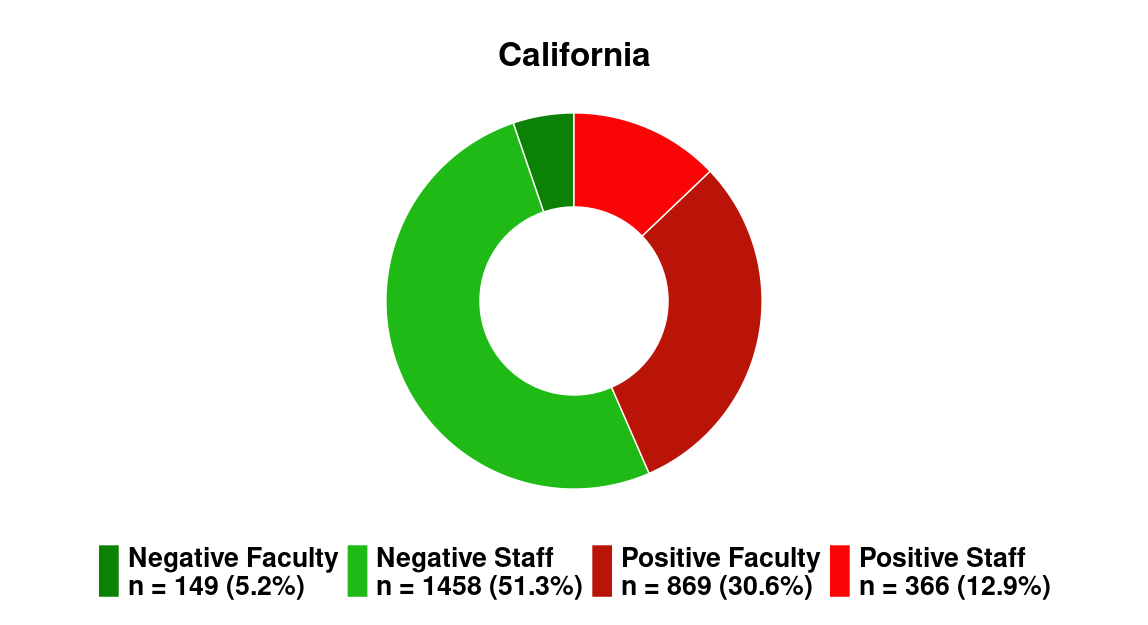
Figure 3.3
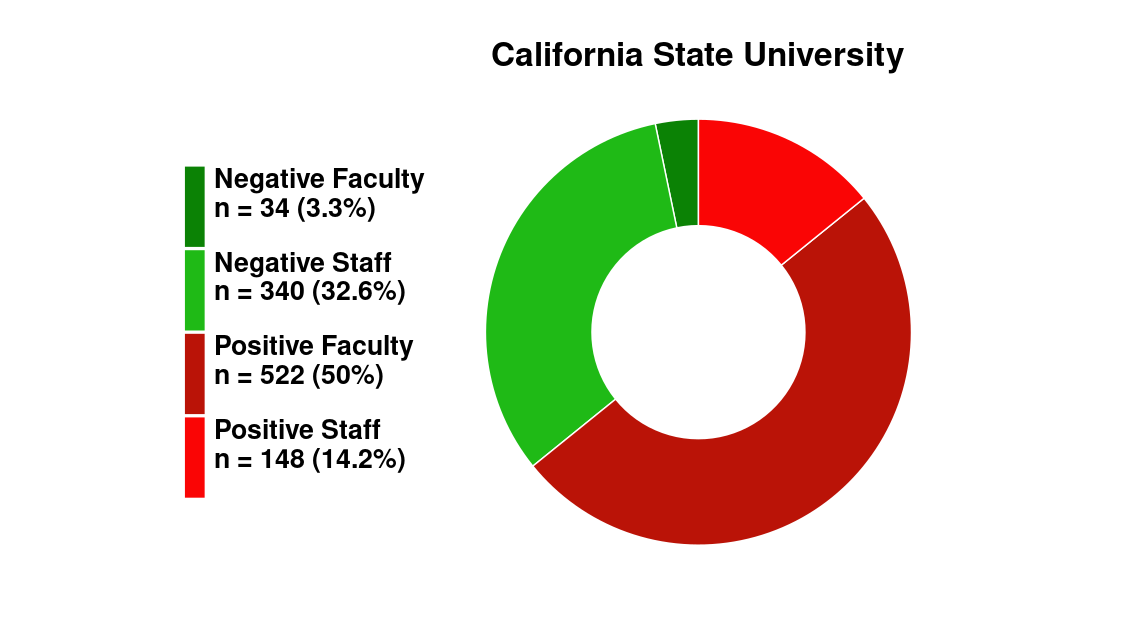
Figure 3.4
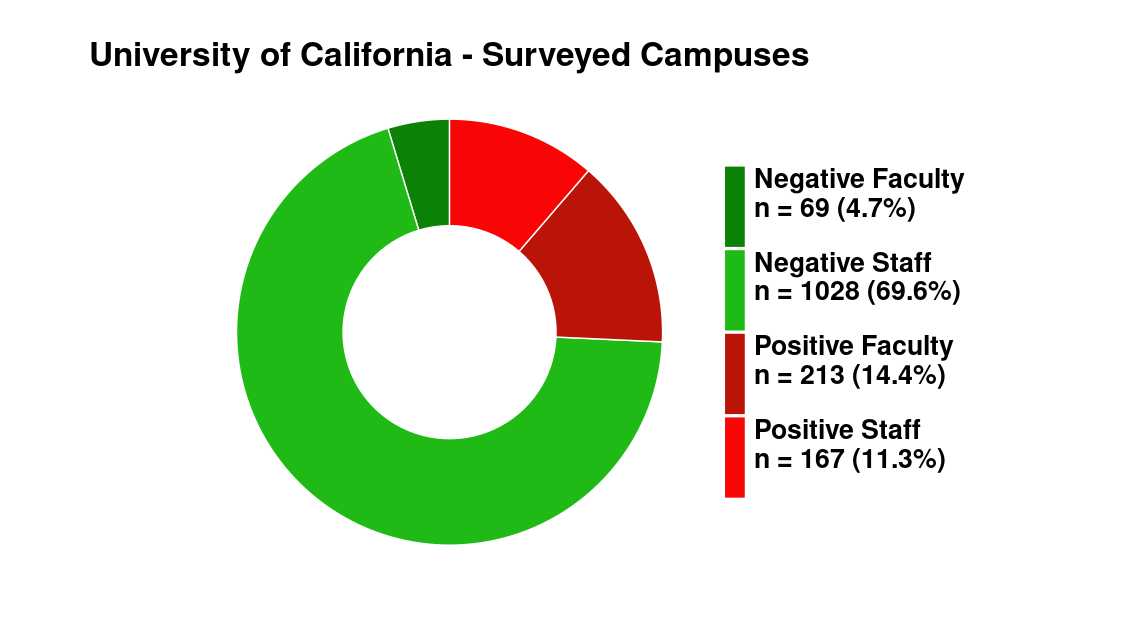
Illinois
Figure 3.5
| College | Percentage of DEI positive postings |
| Chicago State University | 10 / 88 (11%) |
| Eastern Illinois University | 11 / 31 (35%) |
| Northeastern Illinois University | 4 / 16 (25%) |
| Southern Illinois University - Carbondale | 8 / 45 (18%) |
| University of Illinois - Chicago | 109 / 367 (30%) |
| University of Illinois - Springfield | 6 / 19 (32%) |
| University of Illinois - Urbana-Champaign | 66 / 148 (45%) |
| Total | 214 / 714 (29.9%) |
Rates of diversity statement requirements in Illinois were relatively low compared to other democratically affiliated states—29.9% state-wide. We designated as positive 214 of the 714 job listings we collected from the seven surveyed Illinois universities. This finding was unexpected, since the Illinois state government may be the most pro-DEI among the states surveyed. In 2022 alone, Governor J. B. Pritzker signed into law three bills that aimed to increase “equity” and help “underrepresented minorities” succeed in higher education. One of the bills, HB 5464, required colleges to create equity plans, overseen by the Illinois Board of Higher Education (IBHE), which would detail how colleges intended to correct any “disparities” in race or sex among their staffs and faculties.26 The IBHE has championed diversity since at least 2003; in 2021, it established the Diversifying Higher Education Faculty Initiative.27
Public largesse, at the expense of the Illinois taxpayer, has created hefty DEI bureaucracies on Illinois’ state university campuses. University of Illinois at Urbana-Champaign (UIUC), which had the highest incidence (45%) of diversity statement requirements in the state, was an early adopter of diversity statements for tenure and promotion review. The Foundation for Individual Rights and Expression (FIRE) challenged the practice in October 2022, so far without success.28 UIUC also boasts the highest paid DEI official in the state: Sean Garrick, Vice Chancellor for Diversity, Equity, and Inclusion, who received $364,091 in the 2023-2024 academic year.29
As in the section on California, and as in the sections yet to come, we provide a visual representation in the figure below of Illinois’ positive-faculty, positive-staff, negative-faculty, and negative-staff categories. Also as in the previous section, and as in those still to come, we could not collect large enough samples from each university to allow us to provide informative institution-specific analyses for every institution we surveyed. We have provided visual representations of the results for institutions where we could collect large enough samples–where the number of job listings was 250 or greater, including substantial numbers of both faculty and staff. We also have provided visual representations of the data for Illinois.
Figure 3.6
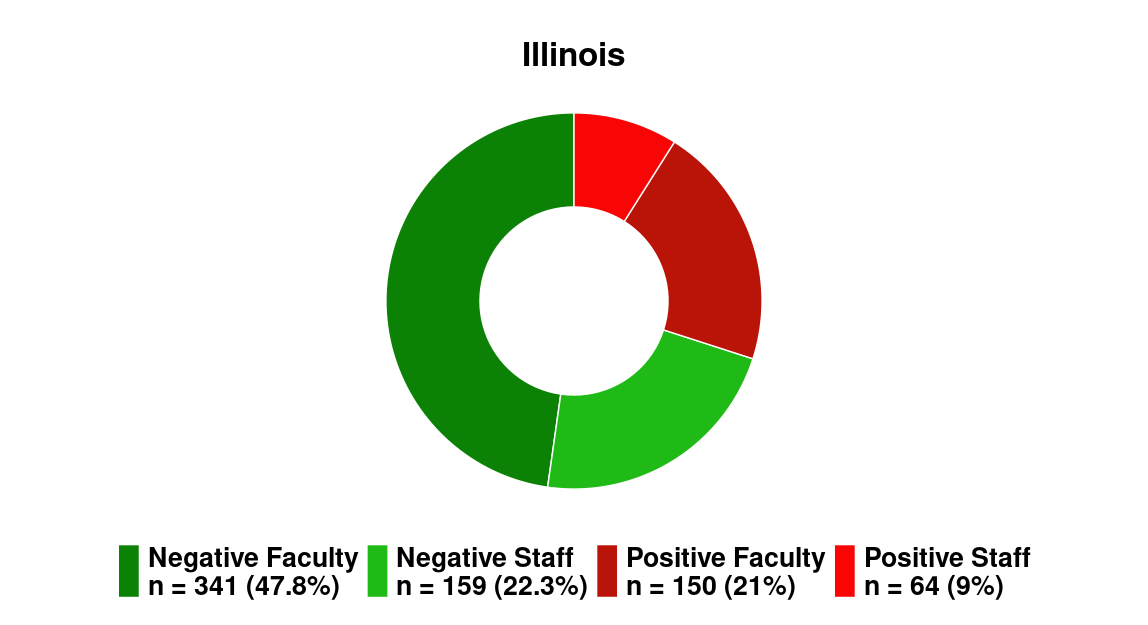
Figure 3.7
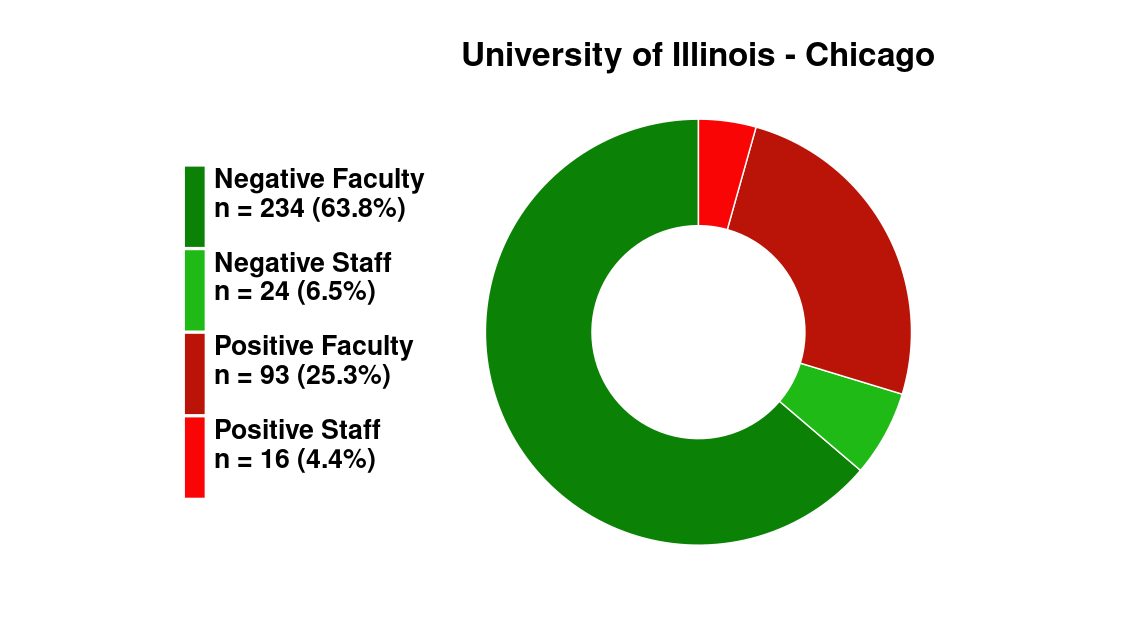
Maryland
Figure 3.8
| College | Percentage of DEI positive postings |
| Bowie State University | 21 / 83 (25%) |
| Frostburg State University | 5 / 15 (33%) |
| Morgan State University | 23 / 98 (23%) |
| Towson University | 25 / 75 (33%) |
| University of Maryland - Baltimore County | 36 / 140 (26%) |
| University of Maryland - College Park | 30 / 116 (26%) |
| University of Maryland - Global Campus | 4 / 265 (2%) |
| Total | 144 / 792 (18.18%) |
We designated as positive 144 of the 792 jobs listings we collected from seven Maryland universities, approximately 18.18%. This was the lowest proportion among the Democrat-controlled states surveyed.
The University of Maryland’s 13.46% average across all surveyed campuses was unexpectedly low. In 2021, the university launched one of the most comprehensive DEI strategic planning regimes in the nation. Each UMD department created and implemented a DEIR (Diversity, Equity, Inclusion, and Respect) Plan, whose standard objectives included “revise our tenure/promotion criteria for [Tenure Track] faculty through a racial justice lens;” “update procurement for catering events and committing to purchase from BIPOC-owned businesses,” and “all panels [at the School of Architecture] will have at least 50% representation from BIPOC participants.”30 That same year the university also pledged $40 million to ongoing faculty diversity efforts, including the creation of the Faculty Advancement at Maryland for Inclusive Learning and Excellence (FAMILE) program.31 While University of Maryland job postings generally did not mention diversity statements, the undergraduate application did. All applicants for undergraduate admission in the 2024-25 cycle were required to answer in 650 words how they had “learned, grown, been inspired or developed skills through one or more components of diversity,” which “includes (but is not limited to) racial, socio-economic, gender, geographical, and sexual orientation.”32
University of Maryland’s Global Campus, an online institution, had substantially lower rates of diversity statement requirements.33 The only positions that required knowledge of equity and inclusion practices were four positions at the Diversity and Equity Office.
Two of the Maryland universities we surveyed, Morgan State and Bowie State, are Historically Black Colleges. Neither their rates of DEI statement usage nor their definitions of diversity differed from other Maryland colleges. Morgan State defined diversity as “underrepresented racial and ethnic groups who have been marginalized,” and Bowie State defined it as “individual differences (e.g. life experiences, learning and working styles, personality types) and group/social differences (e.g. race, socio-economic status, class, gender, sexual orientation, country of origin, ability, intellectual traditions and perspectives, as well as cultural, political, religious and other affiliations).”34 Bowie State’s mention of individual differences is unique among definitions of diversity in schools surveyed, but otherwise its DEI bureaucracy appears to work on the standard range of DEI activities.
Figure 3.9
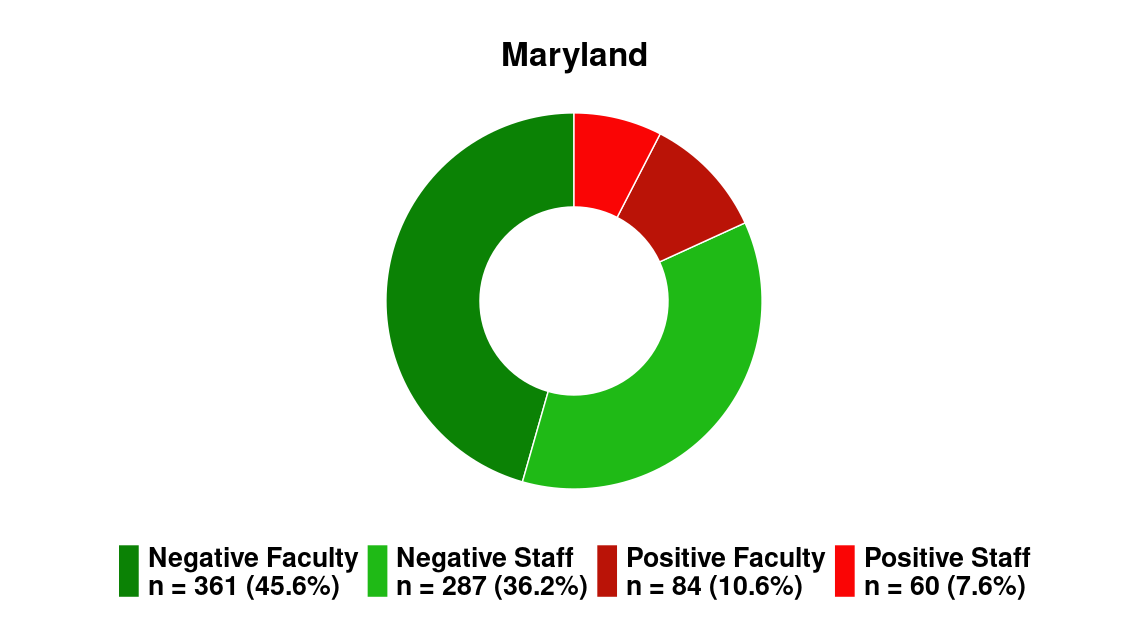
Figure 3.10
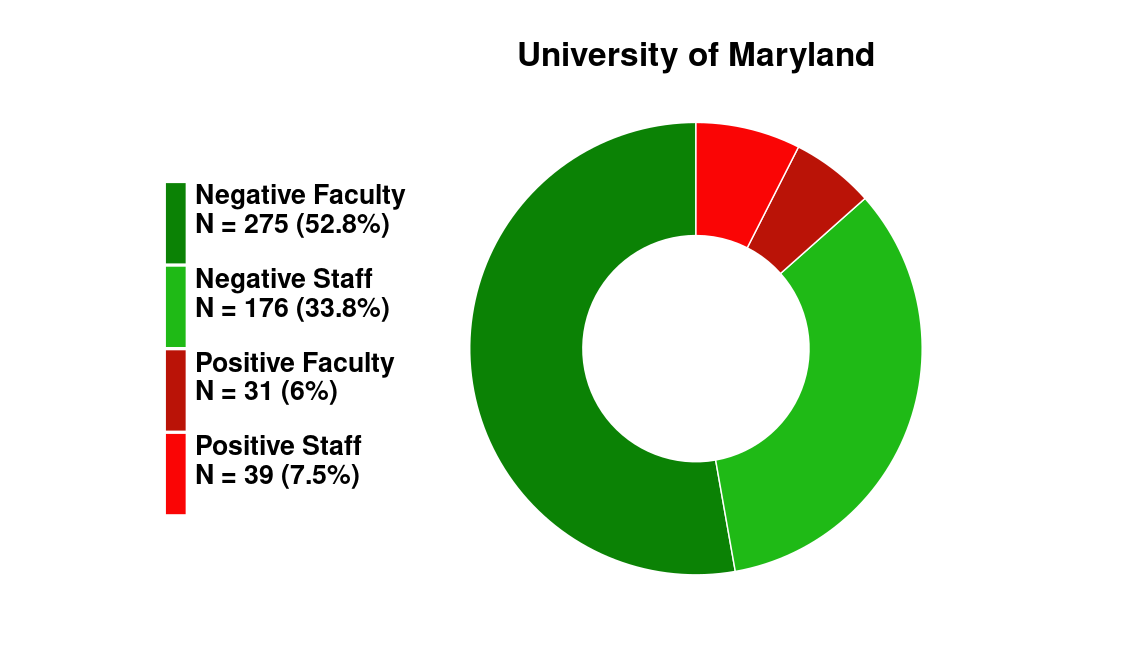
Michigan
Figure 3.11
| College | Percentage of DEI positive postings |
| Central Michigan University | 34 / 94 (36%) |
| Ferris State University | 88 / 142 (62%) |
| Grand Valley State University | 42 / 63 (67%) |
| Lake Superior State University | 1 / 18 (6%) |
| Michigan State University | 294 / 687 (43%) |
| Northern Michigan University | 2 / 15 (13%) |
| University of Michigan - Ann Arbor | 200 / 379 (53%) |
| University of Michigan - Flint | 8 / 44 (18%) |
| Wayne State University | 38 / 252 (15%) |
| Western Michigan University | 15 / 59 (25%) |
| Western Michigan University - Homer Stryker MD School of Medicine | 0 / 32 (0%) |
| Total | 722 / 1785 (40.44%) |
Michigan, like California, has played a central role in the history of affirmative action. Michigan, again like California, also has an affirmative action ban on its statute books. Grutter v Bollinger (2003), the second landmark case in the history of affirmative action, decided the case of a prospective student who sued University of Michigan Law School for “reverse discrimination” for denying her admission. While the Supreme Court upheld the use of race in admissions in Grutter, the Michigan Civil Rights Initiative (2006) soon thereafter curtailed the University of Michigan’s legal right to use race preferences in admissions.
The University of Michigan (UM) has a great reputation among DEI advocates in American higher education, many of whom cite its diversity statement rubric alongside UC Berkeley’s as an industry standard.35 UM’s National Center for Institutional Diversity (NCID) and Center for Social Solutions, institutes devoted to the empirical study of the efficacy of DEI programming, also contribute to UM’s national reputation.36 NCID even conducts research on diversity statements, via the project Understanding Diversity Statements and their Impact for Hiring for Academic Positions.37 The University of Michigan Board of Regent elected in December 2024 to continue funding all DEI activities, despite a recent barrage of media scrutiny of UMs DEI practices, although it banned the practice of requiring “diversity statements” from job applicants.38 This study collected data on the final days at Ann Arbor before the ban; future researchers should be able to use our data to gauge UM’s compliance.
We designated as positive 722 of the 1,785 jobs listings we collected at the eleven universities/campuses we surveyed, approximately 40.45%.
Figure 3.12
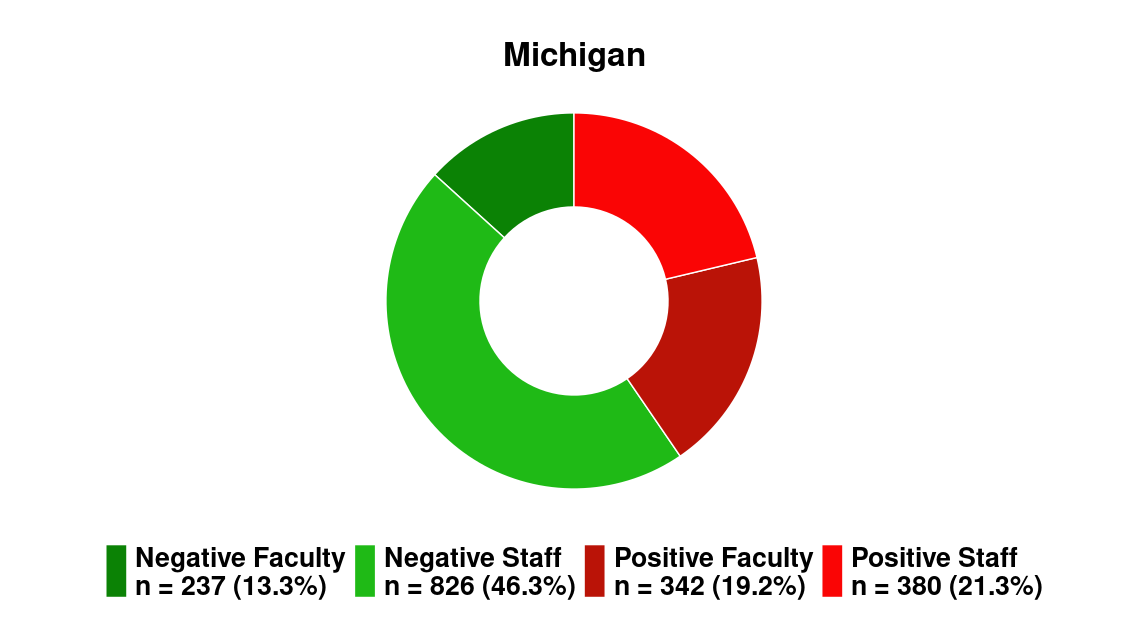
Figure 3.13
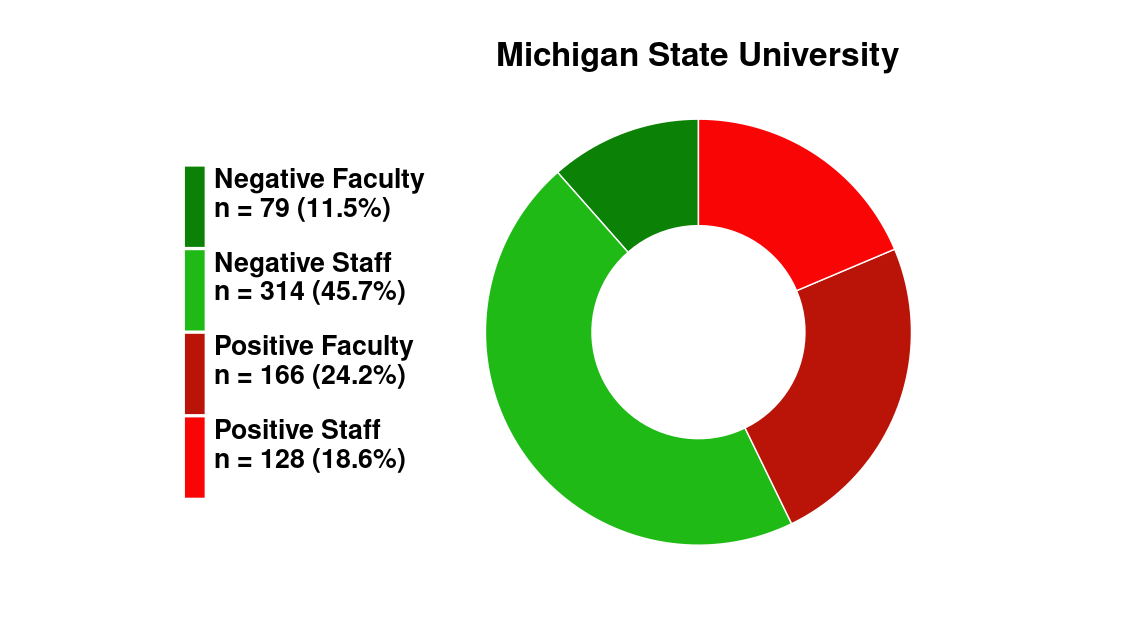
Figure 3.14
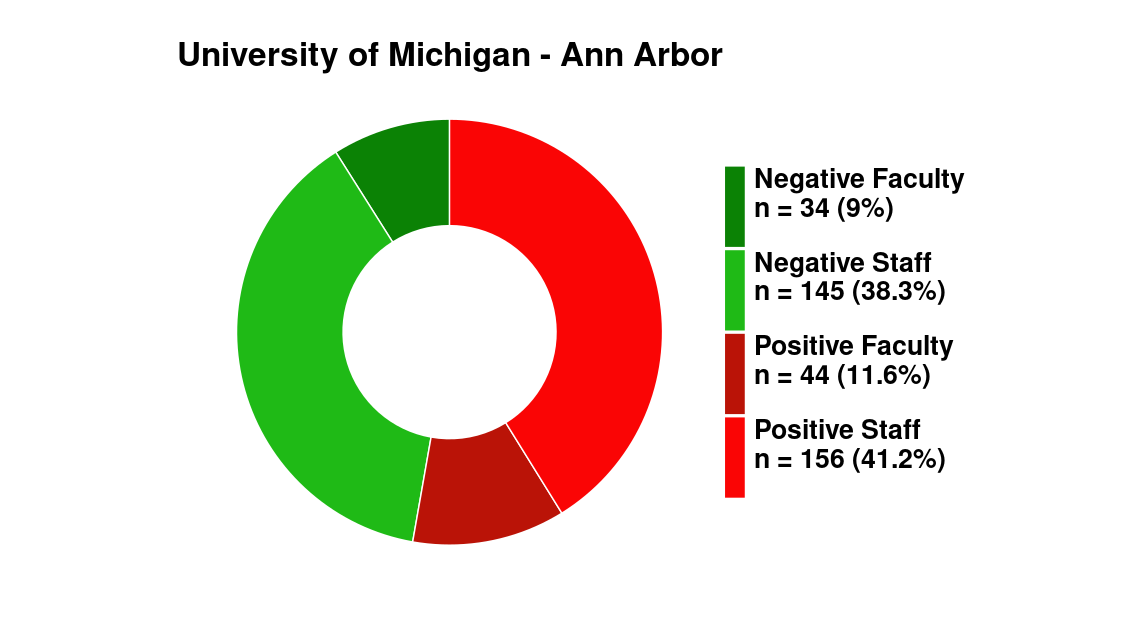
Figure 3.15
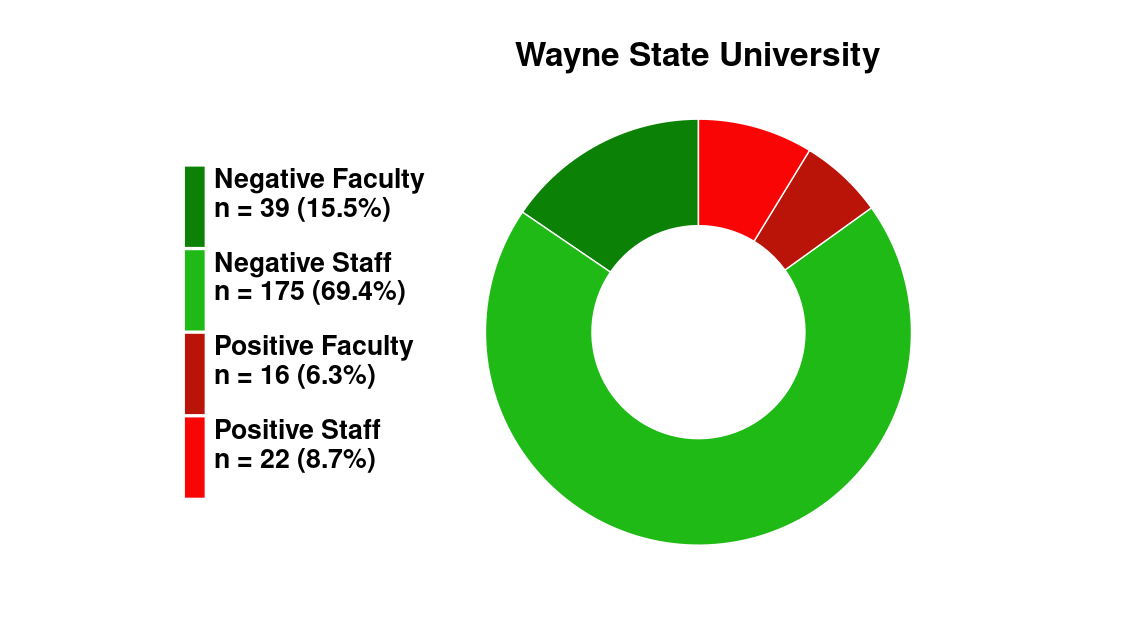
Nebraska
Figure 3.16
| College | Percentage of DEI positive postings |
| Chadron State College | 0 / 15 (0%) |
| University of Nebraska - Kearney | 2 / 43 (5%) |
| University of Nebraska - Lincoln | 38 / 231 (16%) |
| University of Nebraska - Medical Center | 8 / 317 (3%) |
| University of Nebraska - Omaha | 25 / 90 (28%) |
| Wayne State College | 0 / 24 (0%) |
| Total | 73 / 720 (10.13%) |
Nebraskan institutions are relatively free of the practice of using DEI statements, even though no legislation yet has been passed in Nebraska banning DEI practices.39 Only the flagship schools of University of Nebraska–Omaha and University of Nebraska–Lincoln register significant use of DEI statements. The majority of positive results at University of Nebraska–-Lincoln (18 out of 38) required applicants to submit a “Statement of how your combined professional and academic experiences have equipped you to make a valuable contribution to Inclusive Excellence.”40 At University of Nebraska–Omaha, 16 of the 25 of the positive results listed a DEI statement among the required documents.41 Chadron State College, by notable contrast, was the only surveyed institution outside of Texas without a DEI office.
No single institution we surveyed in Nebraska had a large enough sample size to allow informative institutional analyses.
Figure 3.17
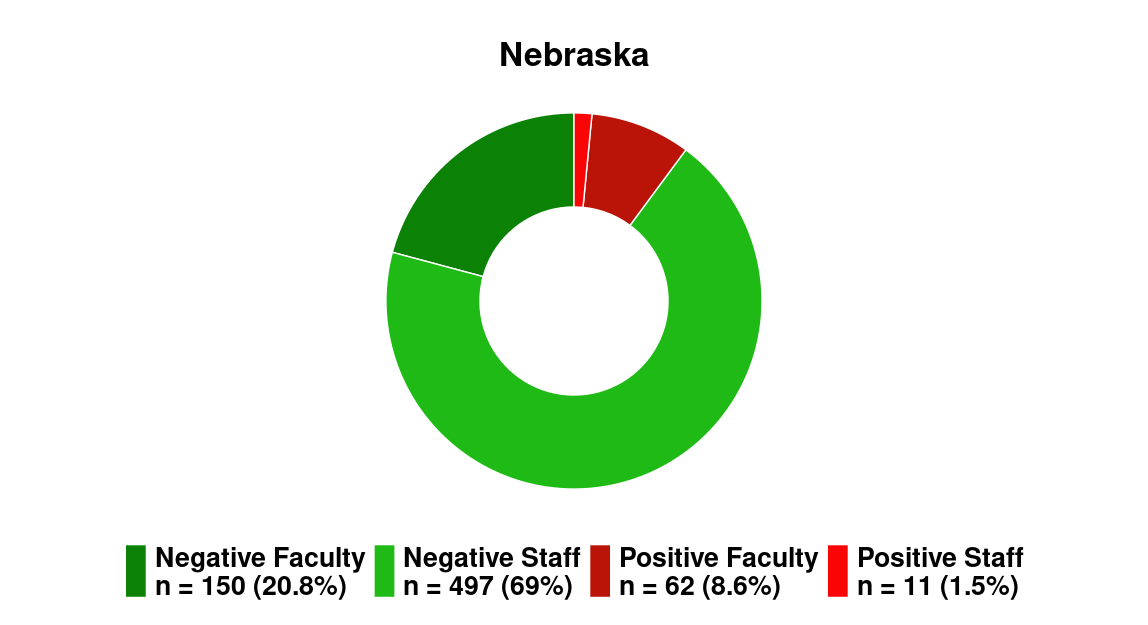
New Mexico
Figure 3.18
| College | Percentage of DEI positive postings |
| Eastern New Mexico University | 0 / 29 (0%) |
| New Mexico State University | 11 / 61 (18%) |
| University of New Mexico | 342 / 714 (48%) |
| Western New Mexico University | 1 / 47 (2%) |
| Total | 354 / 851 (21.02%) |
Aside from New Mexico’s flagship University of New Mexico (UNM), the state universities did not use diversity statements significantly.
At UNM, job postings required diversity statements only roughly half of the time. 90% of positive results included “demonstrated commitment to diversity, equity, inclusion” as an employment qualification.42 UNM’s Faculty Hiring Procedure suggests that faculty hiring committees, behind the scenes, focus intensely upon applicants’ “diversity,” especially their ‘racial diversity.’43 All faculty searches that do not produce a “diverse pool of candidates” may be paused or canceled. To ensure ‘diverse’ results, the “[search] committee must be diverse,” specifically including “at least one woman and one minority (not the same person).”44 A UNM training guide for hiring committees states that Ground Rule #1 is:
Counter Diversity Resistance: The first ground rule is to consider the possibility that you or other committee members feel resistant to diversity initiatives and, accordingly, resistant to one of the committee’s primary purposes.45
UNM’s diversity regime, particularly this Ground Rule, chills free speech, threatens academic freedom–and ensures that New Mexico will impose DEI statements comprehensively and rigorously.
UNM’s 714 job listings comprise the vast majority of the 851 we collected. It was the only institution with a large enough sample size to allow for appropriate individual analysis.
Figure 3.19
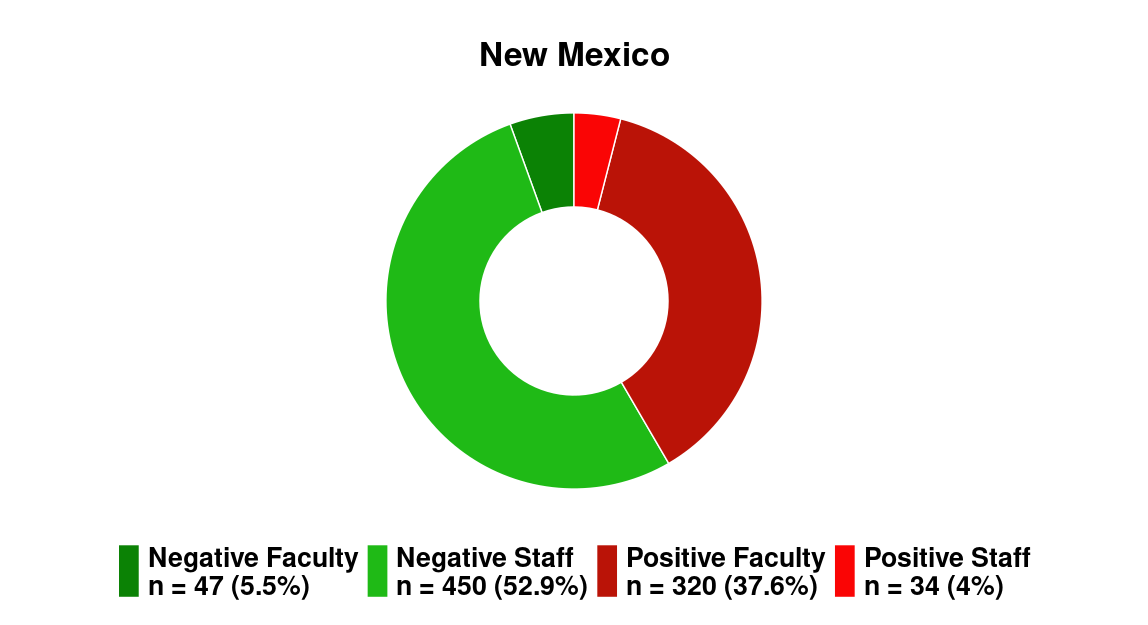
Figure 3.20
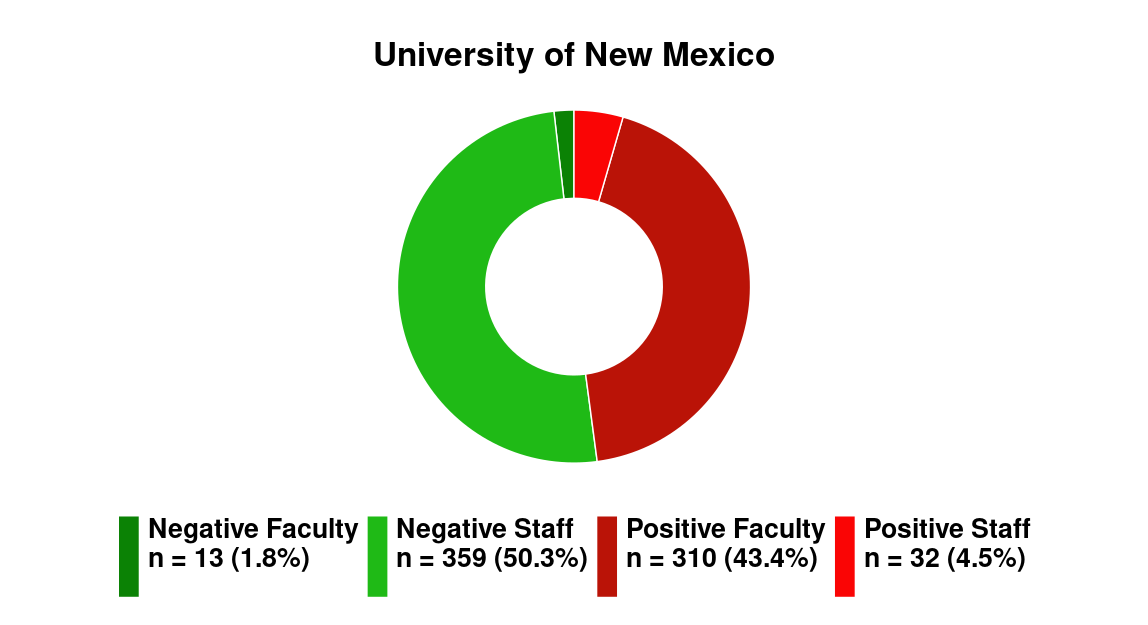
Ohio
Figure 3.21
| College | Percentage of DEI positive postings |
| Air Force Institute of Technology | 0/10 (0%) |
| Bowling Green State University | 9/66 (14%) |
| Central State University | 31/113 (27%) |
| Kent State University | 0/13 (0%) |
| Miami University | 5/175 (3%) |
| Ohio University | 48/179 (27%) |
| Ohio State University | 113/1201 (9%) |
| University of Cincinnati | 28/371 (8%) |
| University of Toledo | 7/217 (3%) |
| Wright State University | 3/87 (3%) |
| Total | 244 / 2433 (10.03%) |
Ohio universities generally registered low rates of DEI statement usage. Our data does not tell us whether this low rate was a consequence of Ohio legislators’ ongoing campaign to pass bans on DEI in public universities, including bans on diversity statements,46 or whether Ohio’s public universities never adopted diversity statement policies in the first place. Ohio’s universities generally had low rates of DEI statement requirements, comparable to rates in South Carolina and Texas, where anti-DEI bills have become law.
The two surveyed institutions that use DEI statements more intensively are Ohio University (OU) and Central State University. OU’s DEI bureaucracy is far more active than others in the state. OU’s hiring manual, How to Hire Process and Information Guide, informs departments that: “Ohio University seeks to hire a diverse workforce.”47 The manual also directs departments to include “Specific efforts to attract women and minorities” and take “creative and intentional” approaches to attracting a “strong, diverse pool.”48 Central State University is a Historically Black University. Its diversity statement rate was high (27%) for Ohio, but comparable to the other two HBCUs we surveyed, Bowie State and Morgan State.
Ohio State University’s 1,201 job listings comprised almost half of the overall dataset for Ohio. The University of Cincinnati was the only other institution that provided a large enough sample size for an appropriate individual analysis.
Figure 3.22
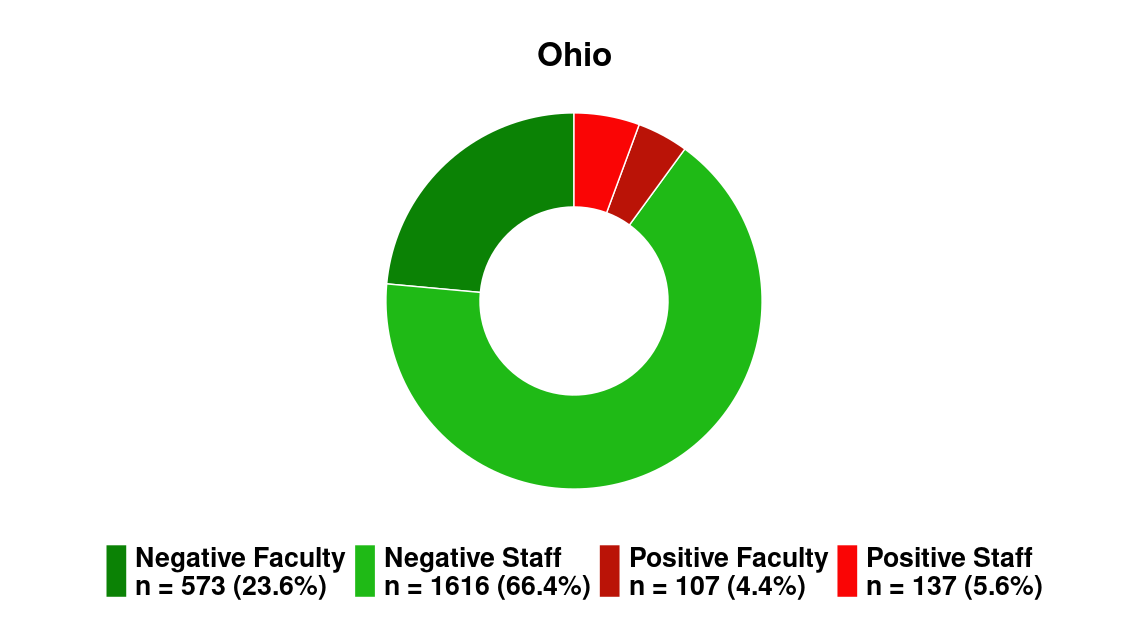
Figure 3.23
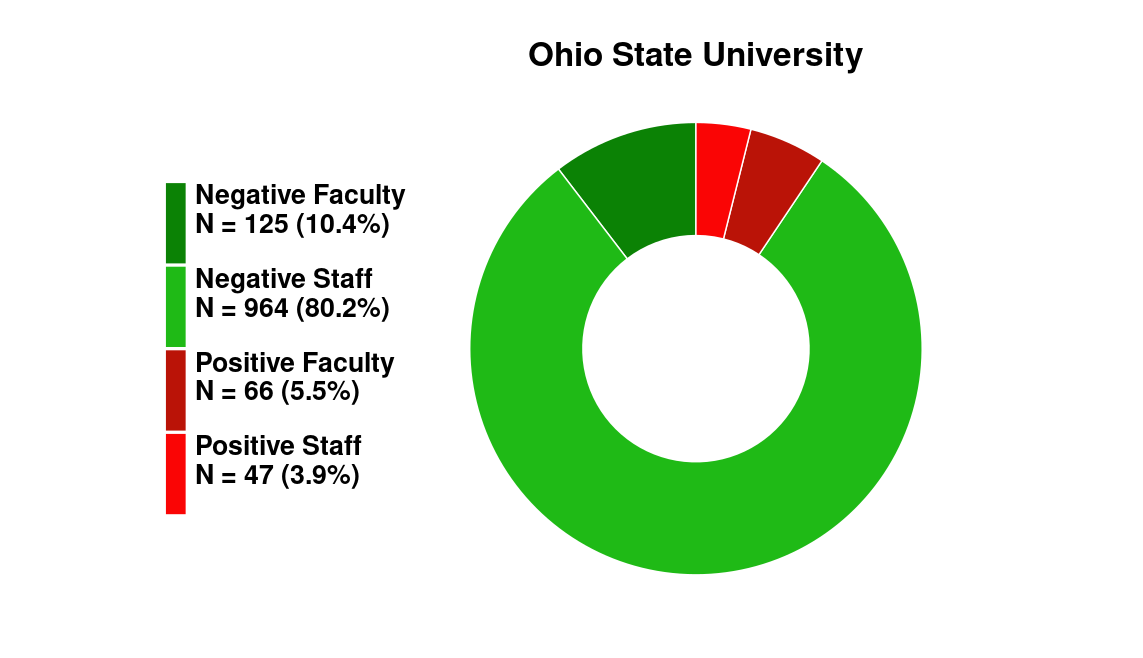
Figure 3.24
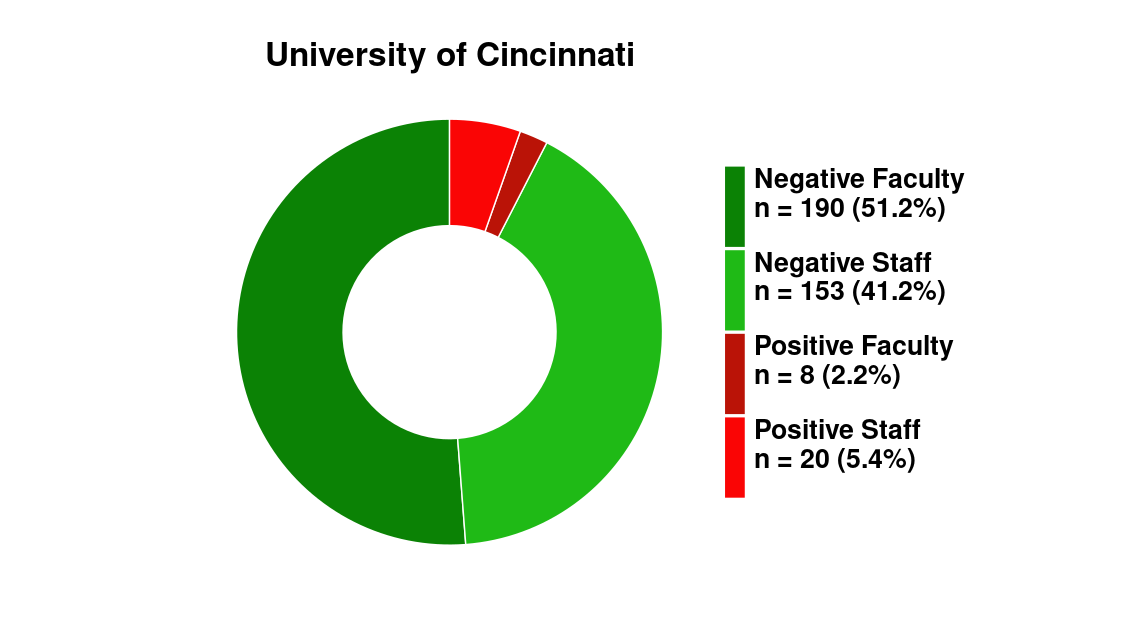
Oregon
Figure 3.25
| College | Percentage of DEI positive postings |
| Eastern Oregon University | 14/34 (41%) |
| Oregon Institute of Technology | 9/59 (15%) |
| Oregon State University | 206/359 (57%) |
| Portland State University | 23/110 (21%) |
| Southern Oregon University | 53/53 (100%) |
| University of Oregon | 142/323 (44%) |
| Western Oregon University | 22/42 (52%) |
| Total | 469 / 980 (47.85%) |
Oregon had the second highest statewide rate of diversity statements: 469 out of 980 postings, 47.85%. Washington, Oregon’s northern neighbor, had the highest, while California to the south had the third highest. Southern Oregon University is one of three institutions in our dataset, alongside Eastern Washington and Dartmouth, to register 100% diversity statement usage. Every job post from Southern Oregon included an institutional diversity statement, which encouraged “those who share in our commitment to diversity, to join our community and we expect all our employees to demonstrate an ability and desire to create an inclusive campus community.”49
Out of the seven universities in the Oregon dataset, only Oregon State and the University of Oregon provided large enough sample sizes to conduct appropriate individual analyses.
Figure 3.26
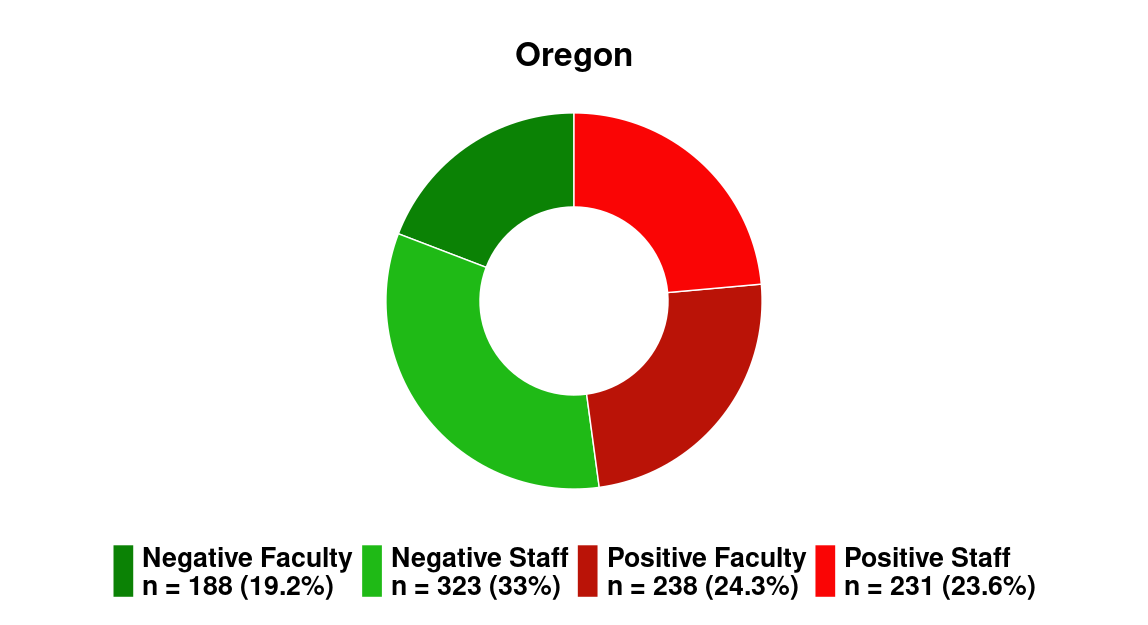
Figure 3.27
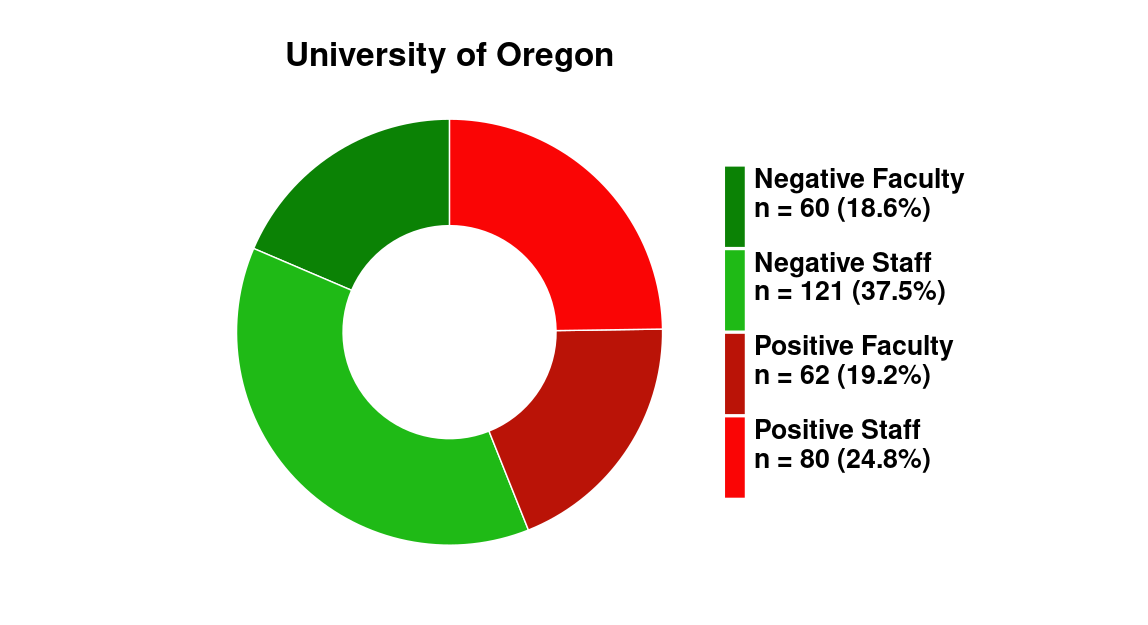
Figure 3.28
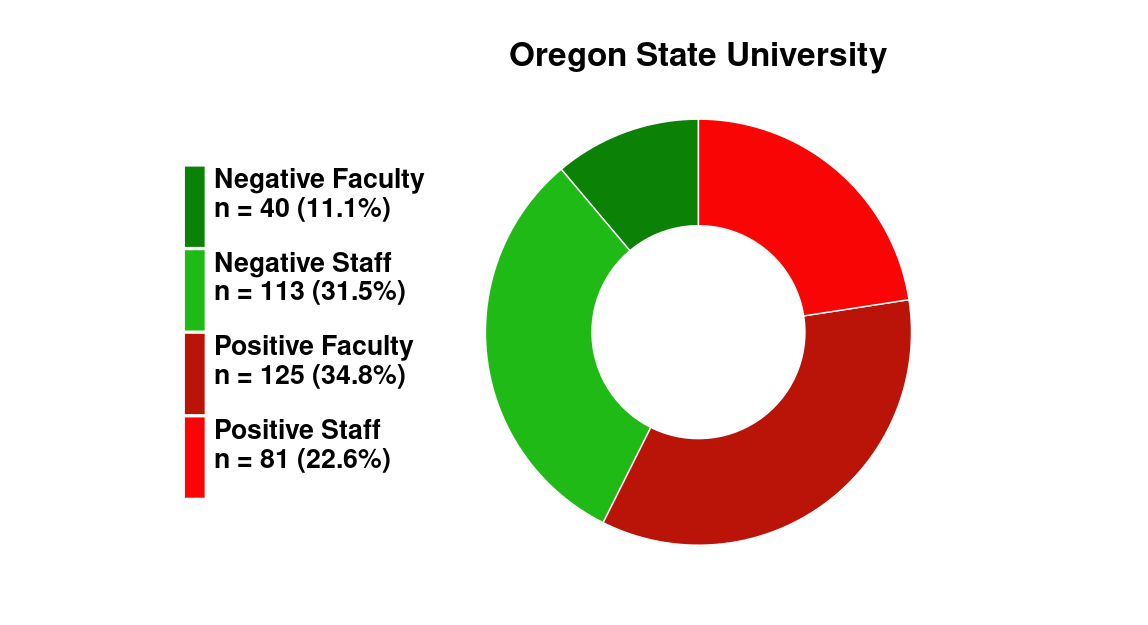
South Carolina
Figure 3.29
| College | Percentage of DEI positive postings |
| Clemson University | 9 / 176 (3%) |
| Coastal Carolina University | 42 / 50 (84%) |
| University of South Carolina | 11 / 514 (2%) |
| Total | 62 / 740 (8.38%) |
The small number of schools sampled in South Carolina, as well as the high variability of DEI statement usage between schools, does not allow for a very informative state-wide analysis.
South Carolina, like Ohio, has considered several bills that ban aspects of DEI in public universities. House Bill 4289 explicitly targets DEI statements.50 House Bill 4663 prohibits any state office, including institutions of higher learning from promoting diversity, equity, and inclusion.51 House Bill 3184, more comprehensively, prohibits public institutions from using statements on diversity, equity, and inclusion, bans DEI trainings, and strengthens first amendment protections for students, academics, and faculty.52 These bills may have encouraged South Carolina universities to reduce their use of diversity statements.
Clemson and University of South Carolina (USC) boast numbers of positive results as low as those Texas colleges and universities, where anti-DEI legislation has been in effect for a year. In August 2023, USC changed the name of its DEI office–likely as a response to the pending anti-DEI legislation.53 At Clemson, the few postings requiring “a statement of Diversity, Equity and Inclusion” were faculty or administrative positions in the Colleges of Agriculture, Art, and Engineering.54 At USC, the Inclusive Excellence statement language (“We recognize diversity in our workforce is essential… the University is committed to eliminating barriers…We celebrate the diverse voices…) indicated the use of racial preference in hiring.55
Coastal Carolina University (CCU), meanwhile, has not eliminated DEI statements, and registered one of the highest surveyed rates of diversity statement use nationwide. Under job responsibilities, CCU postings stated: “[we are] committed to fostering an environment that embraces diversity, equity and inclusion, and we seek candidates who will contribute to a climate that supports the growth and development of a diverse campus community.” Only eight work-study postings at CCU did not require commitment to DEI: CCU required all full-time employees to embrace DEI.
Only USC, whose 514 job listings comprised a large majority of the 740 South Carolina job listings, provided a sample size large enough for individual analysis.
Figure 3.30
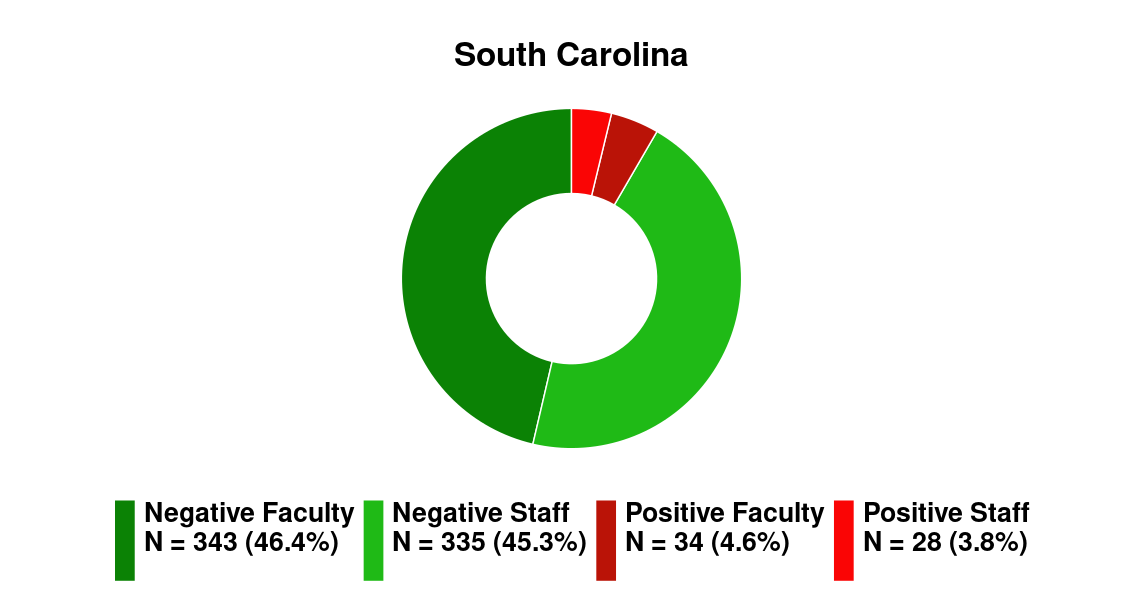
Figure 3.31
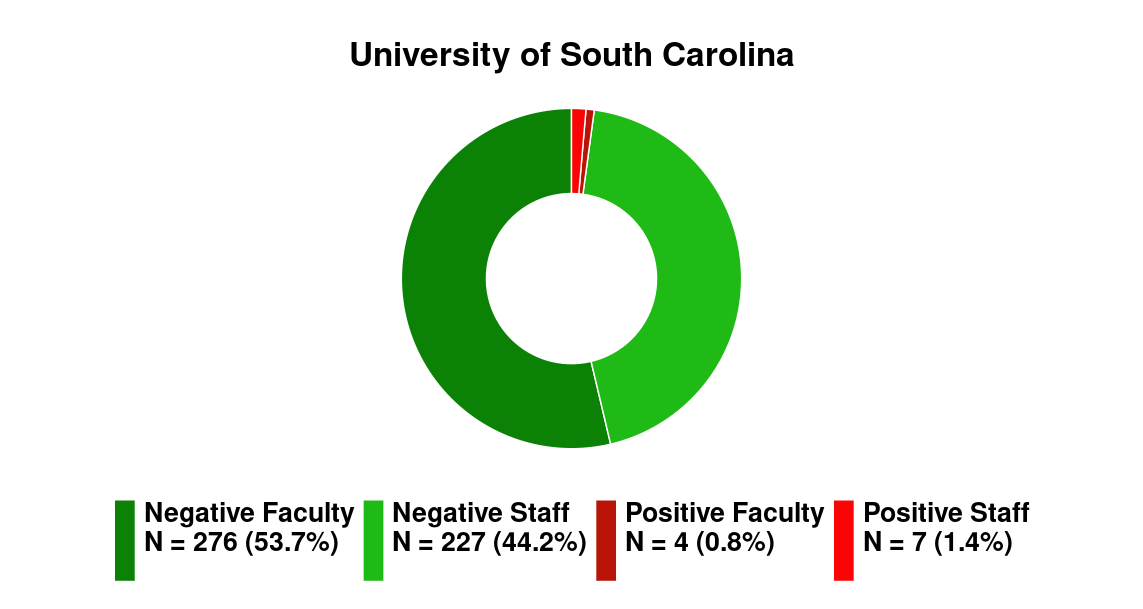
Texas
Figure 3.32
| College | Percentage of DEI positive postings |
| Prairie View A&M University | 0 / 106 (0%) |
| Sam Houston State University | 0 / 112 (0%) |
| Stephen F. Austin State University | 1 / 147 (<1%) |
| Sul Ross State University | 1 / 174 (<1%) |
| Tarleton State University | 0 / 148 (0%) |
| Texas A&M University | 4 / 401 (<1%) |
| Texas Southern University | 4 / 137 (3%) |
| Texas Southmost University | 2 / 70 (3%) |
| Texas State University | 0 / 173 (0%) |
| Texas Tech | 5 / 147 (3%) |
| University of Houston | 5 / 308 (2%) |
| University of North Texas | 16 / 232 (7%) |
| University of Texas - Austin | 1 / 603 (<1%) |
| University of Texas - El Paso | 10 / 117 (9%) |
| University of Texas - Houston | 0 / 502 (0%) |
| University of Texas - MD Anderson | 2 / 411 (<1%) |
| University of Texas - Medical Branch | 5 / 583 (<1%) |
| University of Texas - San Antonio | 0 / 78 (0%) |
| University of Texas - Southwestern | 10 / 868 (1%) |
| University of Texas - Tyler | 0 / 85 (0%) |
| Total | 66 / 5402 (1.22%) |
We designated as positive 66 of the 5,402 job listings we collected from 20 universities in Texas, approximately 1.22%. This low number suggests that Texas hiring administrators do appear to be largely complying with the statutory DEI ban.
In late 2023, Texas passed Senate Bill 17, abolishing DEI Offices and specific DEI practices at all Texas public universities.56 As part of S.B. 17, state auditors will assess compliance at Texas institutions every four years. We hope this section of our report will help state auditors to assess compliance as regards diversity statement requirements.
The University of North Texas (UNT) had the highest number of positive results among Texas universities—16 in all. The positive results all included a statement reading, “we foster an inclusive environment of respect, belonging, and access for all,” in conjunction with statements about promoting equity, health equity, equitable practices, or equitable opportunities. Five of the sixteen results were for College of Health and Public Service job postings, which described its graduates as “educators, researchers, and professionals who strengthen the diverse communities we serve with thoughtful, inclusive, and equitable practices.”57 Postings for Sign Language Interpreter positions were the most DEI saturated at UNT, responsible for “promot[ing] equity and inclusion for students with disabilities.”58
The University of Texas at El Paso had the second largest number of positive results - 10 out of 117. Each of the ten cited the university’s “access, excellence, and impact mission,” and stated that the hiring bodies sought “to attract faculty and staff who share our commitment” to “an open, diverse, and inclusive learning and working environment.”59
At Texas A&M, 3 of the 4 positive results were for tenure track faculty roles in academic nursing education, where “the vision of the college incorporates efforts to directly address health disparities and inequity with particular focus on vulnerable, underserved populations.”60 The remaining positive result, for a faculty role in Urban Planning (LAUP) in the College of Architecture, declared “particular interest” in candidates whose “research contributes to knowledge and practice related to equity, urban regeneration, mobility, or community resilience.”61
At Texas Southern University (TSU), the posting for a Biomedical Science Adjunct Instructor required “demonstrated … commitments to equitable and inclusive teaching and research practices.”62 In the School of Public Policy, the job listing for an assistant professor of Administration of Justice required applicants to profess “a demonstrated commitment towards building an equitable and diverse scholarly environment.”63 A job posting for a Pharmaceutical Sciences Adjunct directly asked, “Do you have [sic] commitments to equitable and inclusive teaching and research practices?”64 At TSU, postings for call center representatives required applicants to promote “a dynamic climate promoting diversity, lifelong learning and academic excellence.”65
At Texas Tech, the job posting expected Architecture Adjuncts to help advance a “culture of belongingness” by “working to create spaces and expand resources to support a broader dialog about multiple cultural and social views in architecture.”66 Preferred qualifications for a Regional Transformation Support Specialist (RTSS) included “demonstrated leadership in promoting equity and diversity.”67
At Stephen F. Austin State, the sole positive result was for a job posting for Counselor (Mental Health Professional) role, which required “knowledge and awareness of dimensions of diversity,” “cultural knowledge of key populations served,” and “knowledge of and skill in determining culturally appropriate approaches.”68 At Sul Ross State, the sole positive result was for an Archives Library Assistant job posting, which required “strong commitment to inclusivity, diversity, life-long learning, and a desire to work in and foster a collaborative, respectful culture.”69
Since about 3/5ths of the dataset (3,247 job listings) came from various universities within the University of Texas system, we analyzed these universities all together.
Figure 3.33
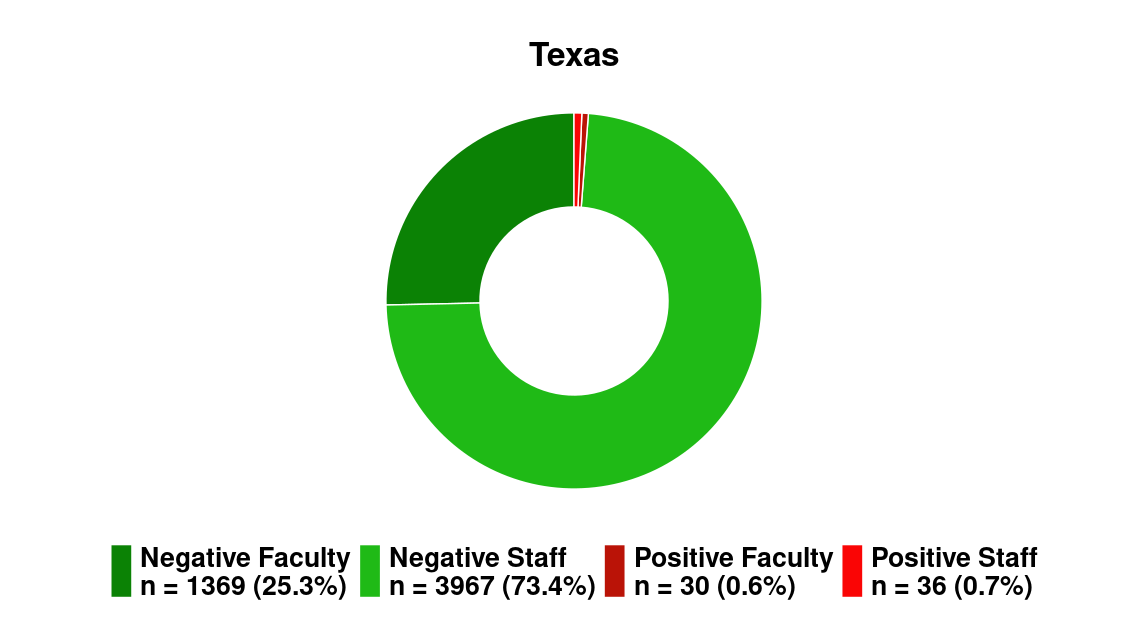
Figure 3.34
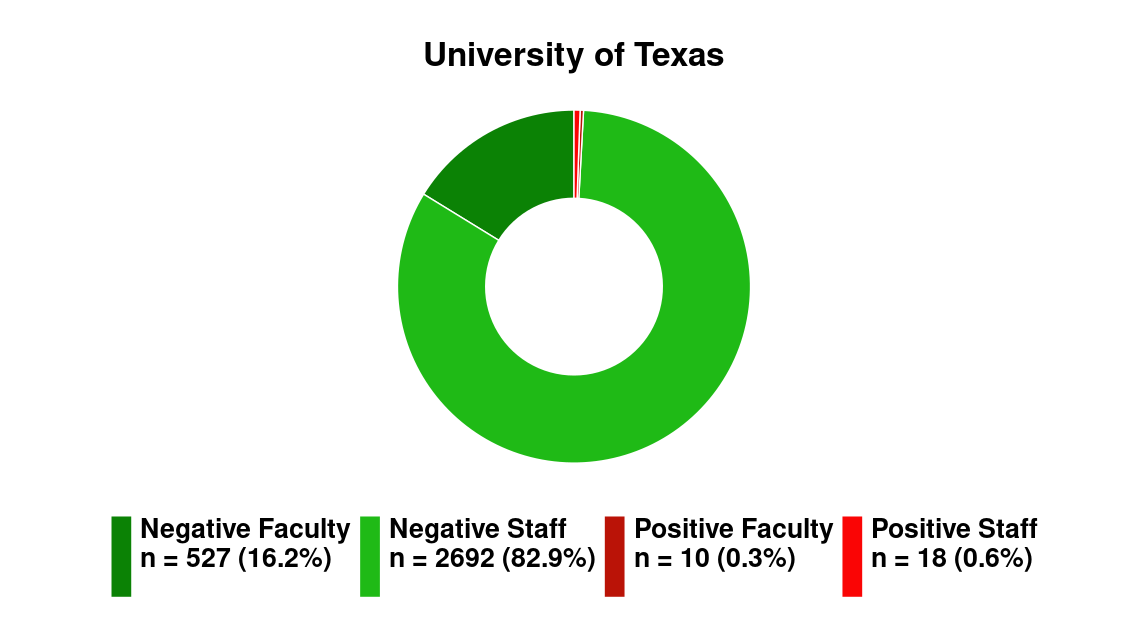
Figure 3.35
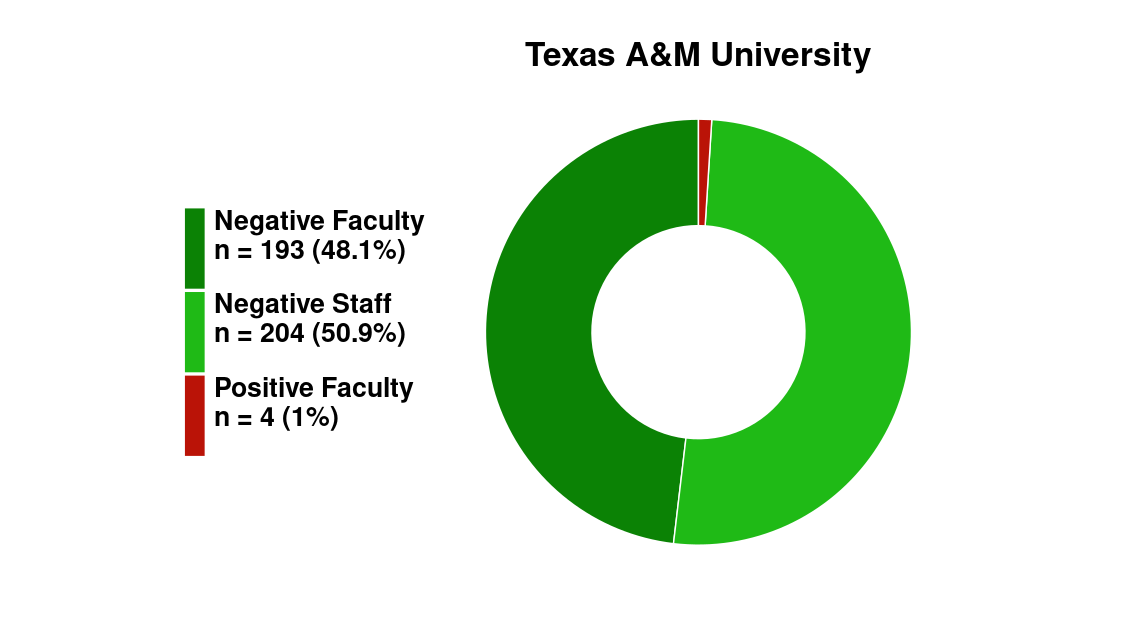
Figure 3.36
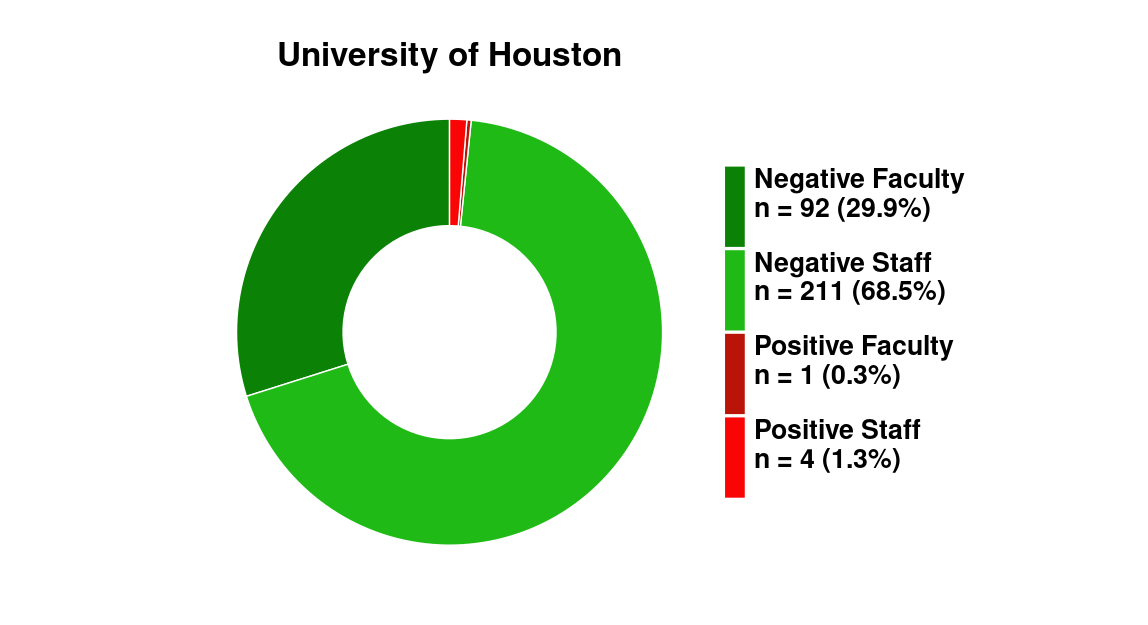
Washington
Figure 3.37
| College | Percentage of DEI positive postings |
| Central Washington University | 41 / 106 (39%) |
| Eastern Washington University | 31 / 31 (100%) |
| University of Washington | 580 / 846 (69%) |
| Washington State University | 35 / 105 (33%) |
| Total | 687 / 1088 (63.14%) |
Washington had the highest state-wide percentage of job postings with diversity statements of the states we sampled—63.14%.
One school, the University of Washington (UW), contributed heavily to Washington’s high percentage. UW accounted for 846 out of 1,088 (77.75%) postings surveyed in Washington, and UW registered 580 postings with diversity statements, 68.55% of its total. University of Washington’s affirmative action measures constitute, in the words of one faculty member, “a long-standing pattern of illegal hiring,” “tacitly encouraged across the upper and central administration.”70 In 1998, Washington passed Initiative 200, which banned state use of race preferences. In November 2023, however, the university’s own University Complaint Investigation and Resolution Office (UCIRO) found that a search committee re-ranked faculty job candidates on the basis of race.71 In its report, the compliance office detailed how the search committee “inappropriately considered candidates’ races when determining the order of offers” and provided “disparate opportunities for candidates based on their race.” UW’s UCIRO offered a rare mea culpa for a university’s DEI policies.72
At Eastern Washington University, every job posting asked applicants to submit a “Diversity Response” Statement, yielding a 100% score for the university. The Diversity Response Statement asked applicants to demonstrate how their qualifications prepared them to work with diverse groups, and how they would “apply an approach that is supportive to the diverse needs.”73 This second part of the prompt reappeared in the required qualifications section, where applicants were informed they must possess a “demonstrated ability to apply a culturally responsive and flexible approach that is supportive to the diverse needs, including universal access, of our students, faculty, staff, and the public.”
Figure 3.38
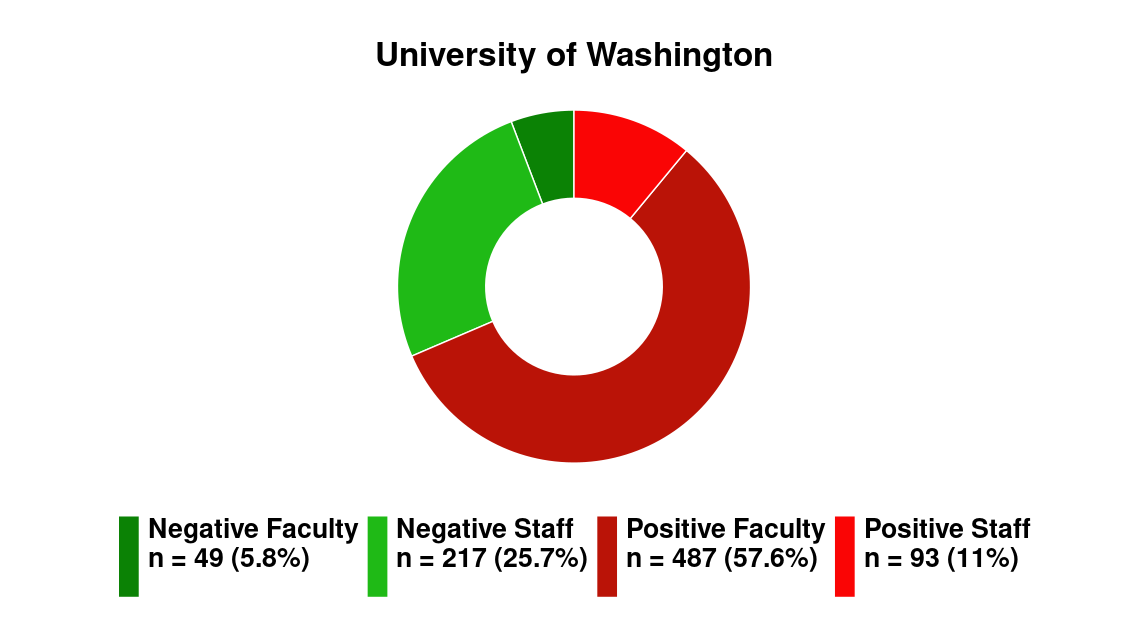
Figure 3.39
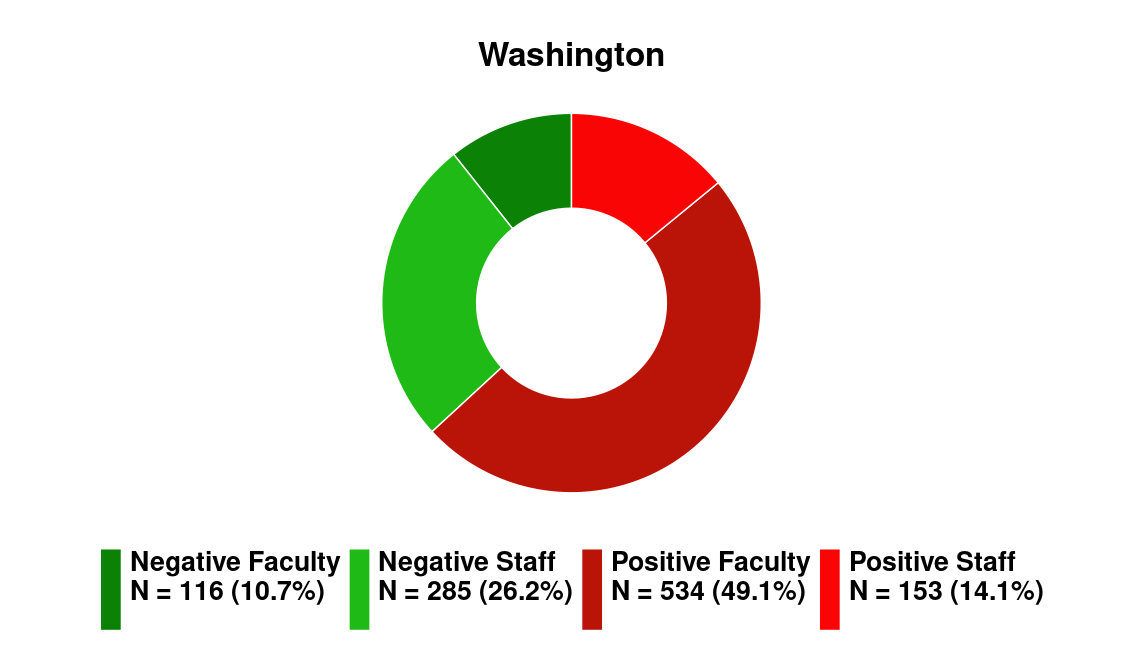
The Ivy League and MIT
Figure 3.40
| College | Percentage of DEI positive postings |
| Brown University | 292 / 366 (80%) |
| Columbia University | 191 / 1279 (15%) |
| Cornell University | 285 / 349 (82%) |
| Dartmouth College | 120 / 120 (100%) |
| Harvard University | 273 / 571 (48%) |
| The Massachusetts Institute of Technology | 12 / 308 (4%) |
| Princeton University | 1 / 190 (<1%) |
| University of Pennsylvania | 802 / 1521 (53%) |
| Yale University | 35 / 427 (8%) |
| Total | 2011 / 5131 (39.19%) |
We designated as positive results 2,011 of the 5,131 job listings from the eight Ivy League schools and MIT, approximately 39.19%. We designated as positive results only 1,199 of the 4,018 staff job listings, approximately 29.8%, but we designated as positive results 812 of the 1,113 faculty job listings, approximately 72.9%.
Dartmouth was one of only three institutions in the entire study where 100% of job postings required commitment to diversity, equity and inclusion. Every single Dartmouth job posting, in the Key Accountabilities section of the postings, required that candidates “[demonstrate] a commitment to diversity, inclusion, and cultural awareness through actions, interactions, and communications with others.”74
Cornell University has the second highest diversity statement percentage among Ivy League/MIT institutions—82%, or 285 out of 349 postings. Cornell’s rubric for assessing the success of its DEI programs is often cited as a model along with UC Berkeley’s and University of Michigan’s.75 At Cornell, even staff roles such as plumber/journeyman and radiation safety specialist have as their first required qualification: “Experience in and/or demonstrated commitment to supporting diversity, equity, access, inclusion, and wellbeing,” and as their second, “ability to cultivate and develop inclusive and equitable working relationships.”76
At the University of Pennsylvania, the Children's Hospital of Pennsylvania (CHOP) and the Perelman School of Medicine provided many of the job postings with DEI requirements. The standard DEI language for CHOP reads: “we seek candidates who embrace and reflect diversity in the broadest sense.” Advocacy groups like Do No Harm have done much to expose the effects of ‘health equity’ and racialized hiring practices at Perelman and CHOP. The University of Pennsylvania, despite a popular backlash, has chosen to double down on its DEI policies.77
MIT, Princeton, and Yale, by contrast, appear to be quietly stepping away from the use of diversity statements. In May 2024, MIT became the first university to ban diversity statements.78 In 2021, Princeton professors Robert P. George and Keith Whittington founded the Academic Freedom Alliance, a strong critic of DEI statements; AFA’s work may have contributed to Princeton’s low use of diversity statements. Princeton’s sole positive result was for its Associate Dean for Diversity and Inclusion job listing.79 In October 2024, Yale recruited Prof. Whittington to start a new free speech and academic freedom center. Even Yale, the site of the 2015 Halloween Costume Controversy, may be retreating from DEI commitments.80
Individual analyses of seven Ivy League schools and the Massachusetts Institute of Technology follows. We excluded Dartmouth College from individual analysis because its sample size was too small. While we have included an individual analysis of Yale, note that it only advertised staff jobs during the months we collected data.
Figure 3.41
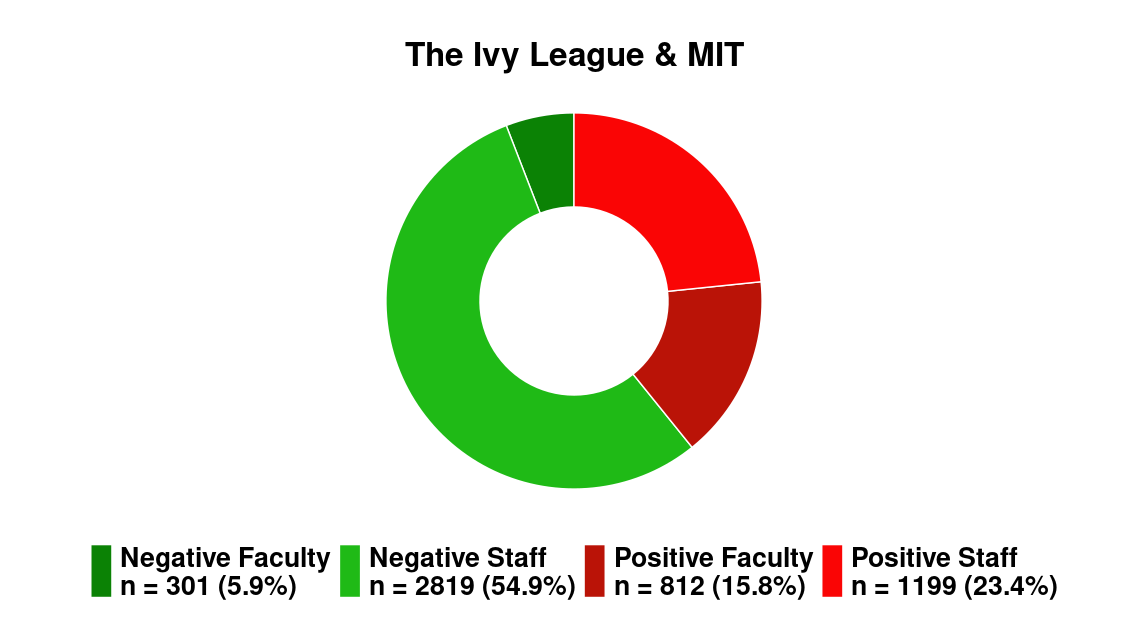
Figure 3.42
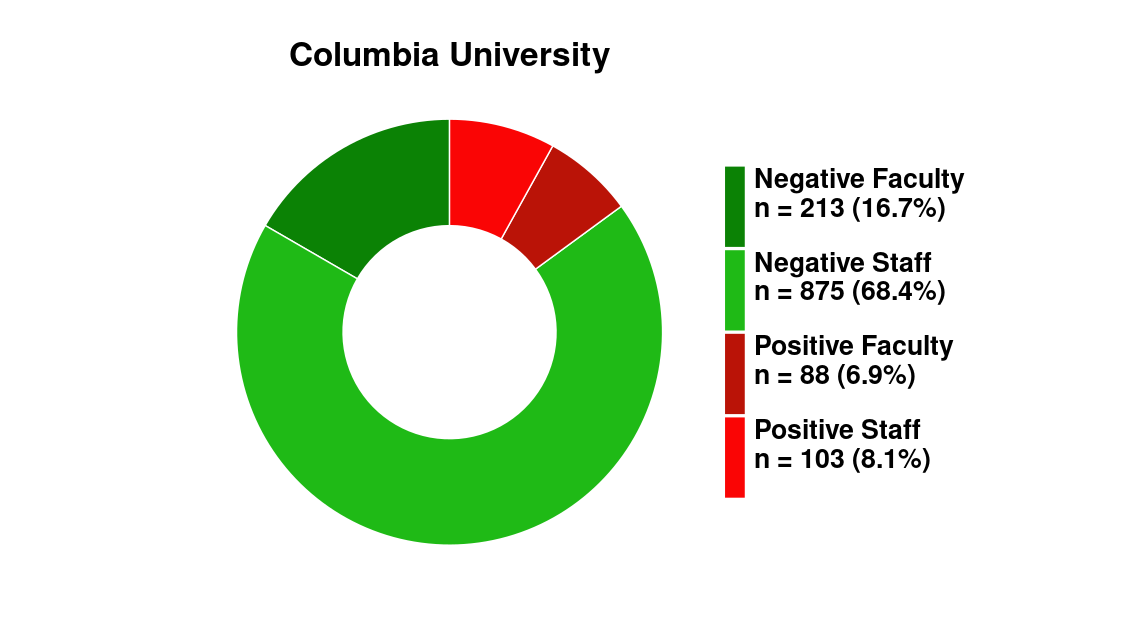
Figure 3.43
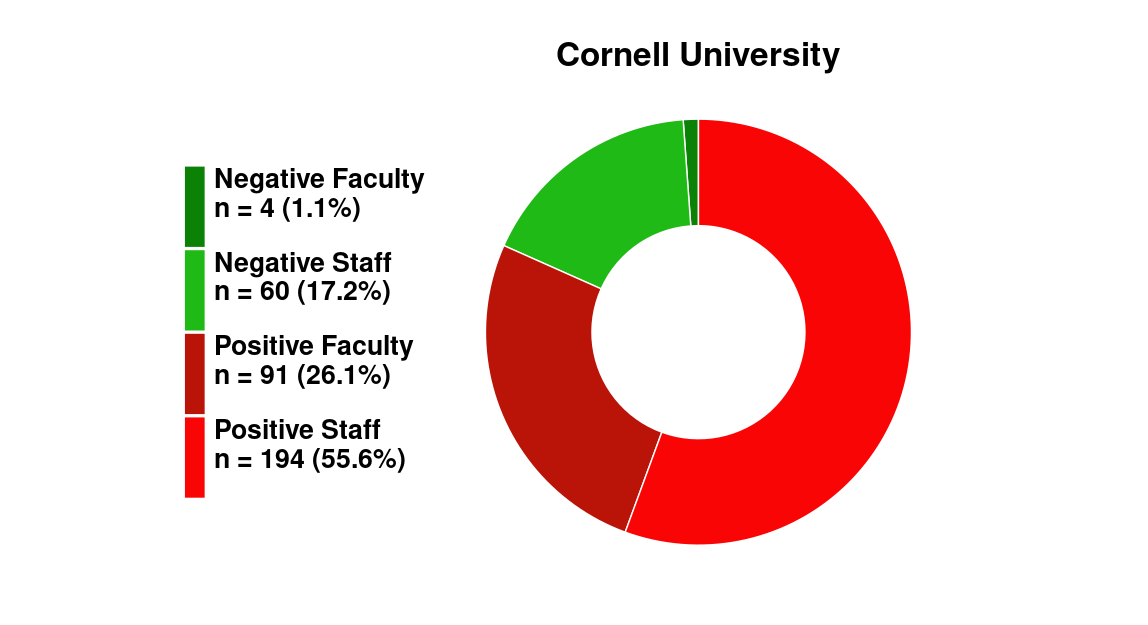
Figure 3.44
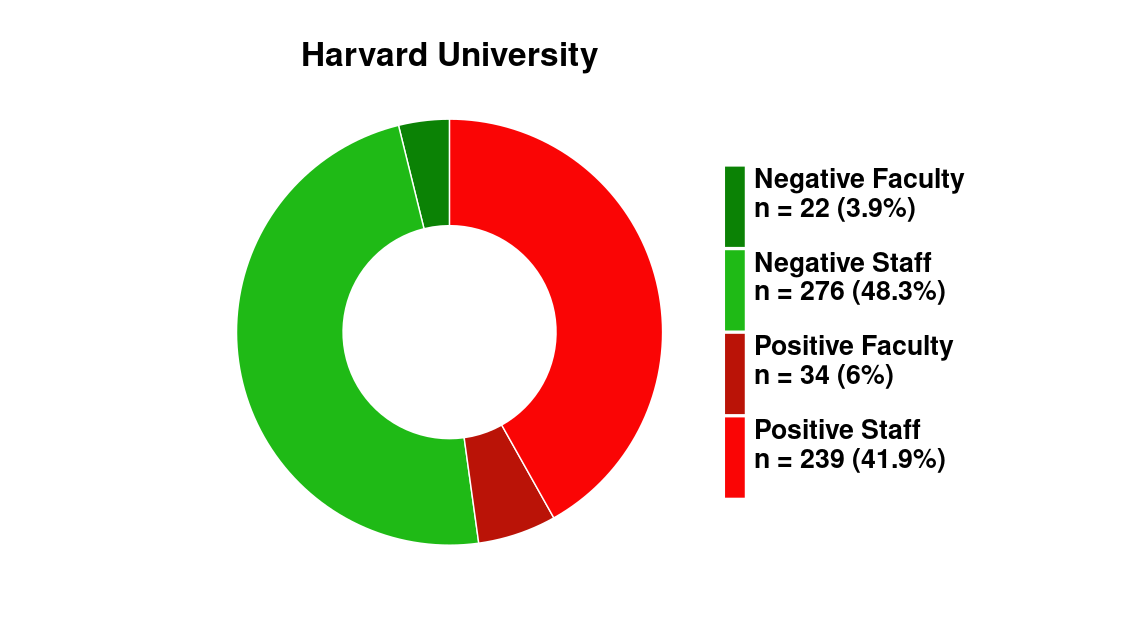
Figure 3.45
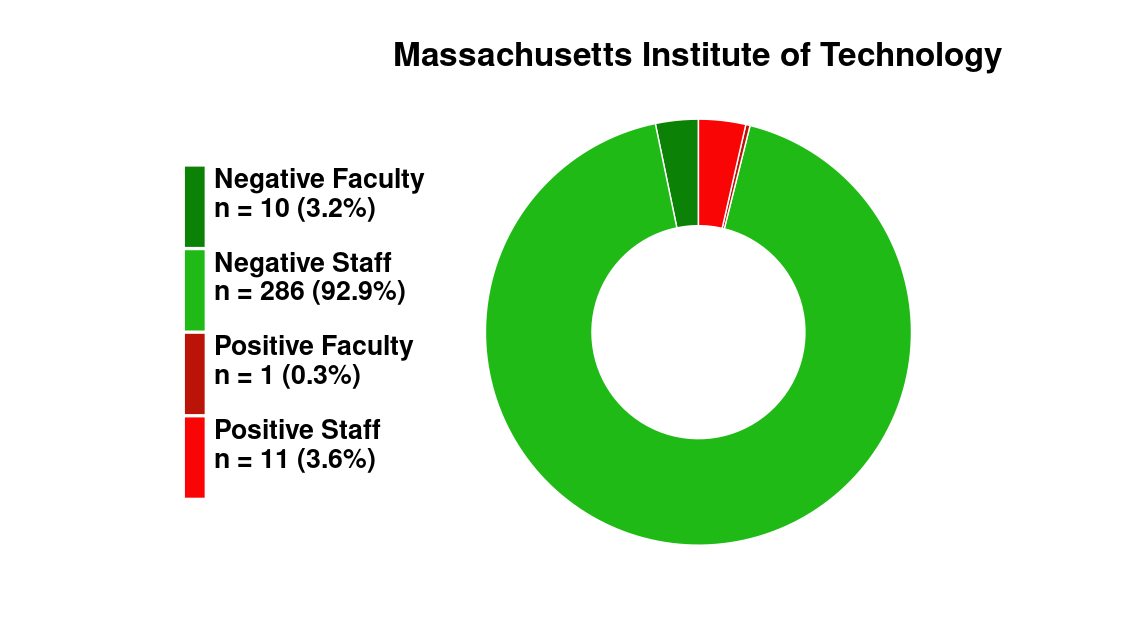
Figure 3.46
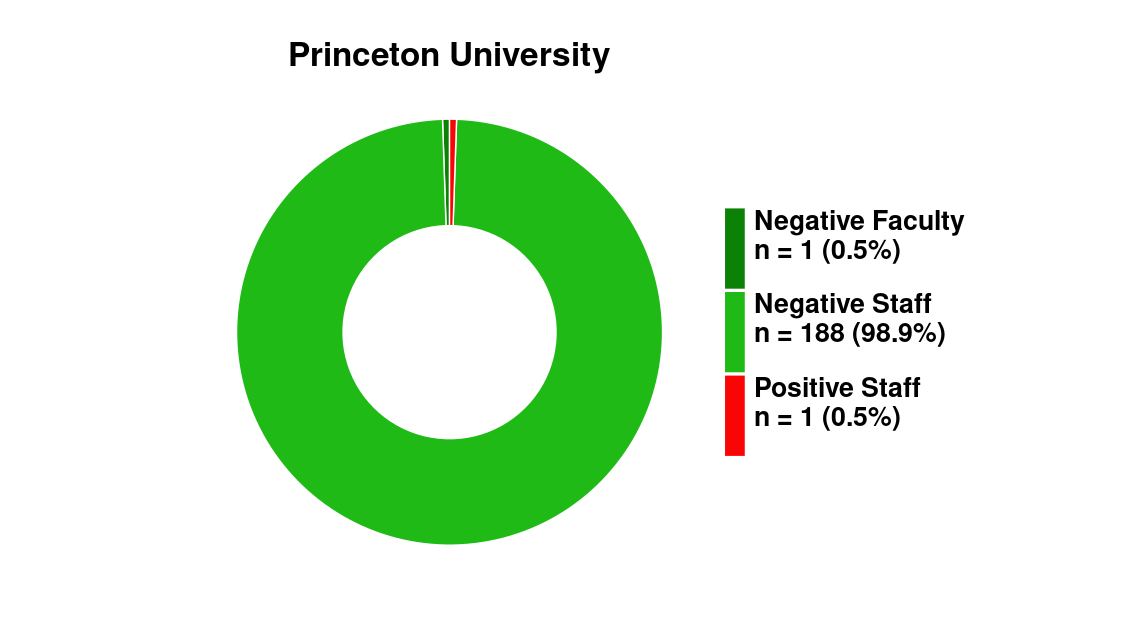
Figure 3.47
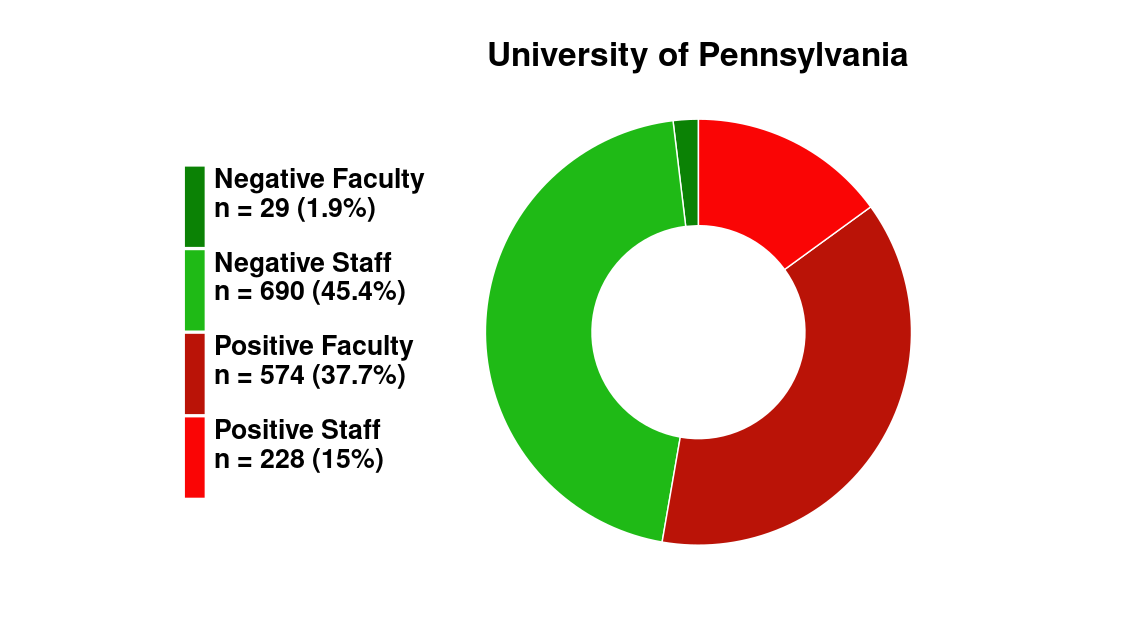
Figure 3.48
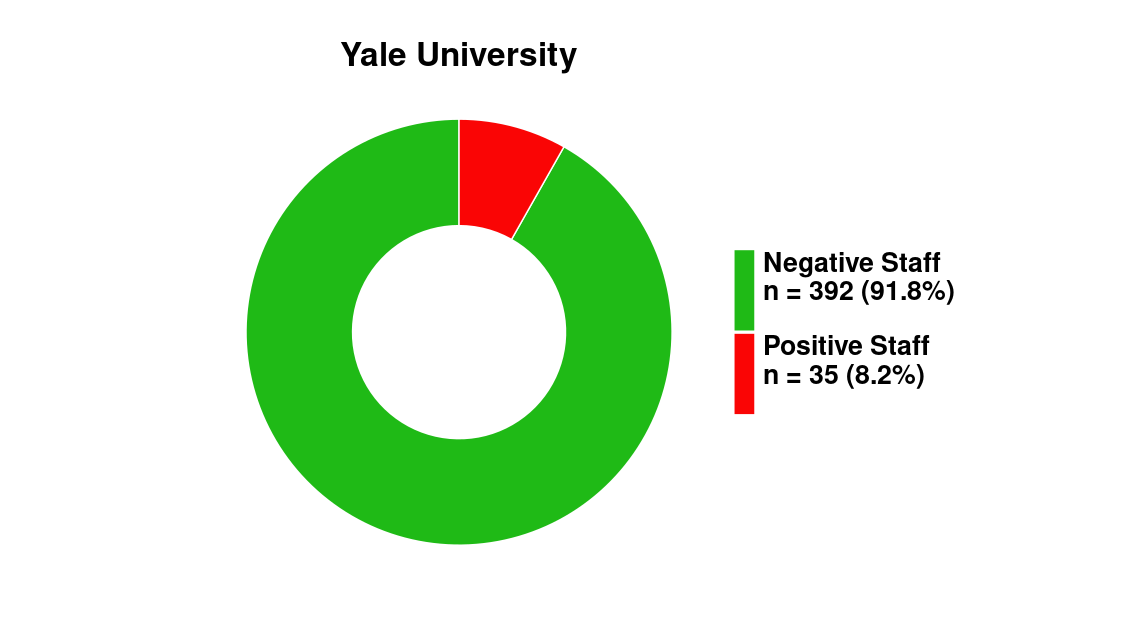
General Discussion
A large majority of surveyed institutions—86 out of 98—solicited commitments to DEI from applicants. At most institutions, however—70 out of 98—hiring committees solicited DEI statements in fewer than 50% of job postings. In other words, while most institutions solicited commitment to DEI in at least some job postings, they rarely solicited DEI in a majority of job postings. Most institutions focus DEI ideological insistence on faculty and upper level administrative roles, such as Dean and Vice Provost, and in DEI or DEI-adjacent offices.
The western, progressive states of California, Washington, and Oregon seem to use DEI statements most intensively. Moderately progressive states such as Illinois, New Mexico, and Maryland use DEI statements less intensively. Moderate or conservative states, such as Ohio, South Carolina, and Texas, appear to use DEI statements the least, although individual institutions in these states, such as Central State University in Ohio or Coastal Carolina in South Carolina, use them as intensively as do the most progressive campuses in the most progressive states. Across the nation, DEI Statement requirements tended to be most intensive at the flagship state schools, such as the University of Illinois Urbana-Champaign.
Anti-DEI legislation, and even just the introduction of an anti-DEI bill, appears to substantially lower state universities’ use of diversity statements. Schools in South Carolina and Ohio have responded to on-going anti-DEI legislation efforts by changing office names and DEI policies, and generally registered low rates of DEI statement use.81 Texas, the only state surveyed which has passed anti-DEI legislation, had the lowest state-wide rate of DEI statement use. Well-crafted state legislation targeting DEI practices appears to be an effective method to limit both diversity statements and DEI practices more broadly.
Outside of legislative action, media scrutiny and mobilized public opinion appear generally, if not universally, to induce institutional retreats from commitments to DEI and diversity statements. Yale and Princeton appear to have quietly dropped the practice, and the UC system recently announced system-wide discontinuance as well.82 UCLA dropped diversity statements after bad publicity, as did the University of Michigan, though it continues to fund its DEI programs more broadly. The University of Pennsylvania, on the other hand, dropped neither diversity statements nor its other DEI programs.
Legal Exposure and Regaining Public Trust
President Trump’s recent executive order, Ending Illegal Discrimination and Restoring Merit-Based Opportunity, creates the possibility of challenging DEI practices as illegal group-based discrimination. The executive order, however, leaves the specific practice of diversity statements largely untouched.83 Government action to enforce Ending Illegal Discrimination potentially could eliminate many DEI programs, including ones mentioned in this report such as University of California’s PPFP. Eliminating DEI statements may require a new executive order.
An executive order to preserve and maintain freedom of thought on our universities, could, in addition to its positive affirmative of the rights of faculty and university employees to freedom of conscience, label DEI a set of narrow, ideological beliefs, and deem statements that require employees to maintain these beliefs a violation of employee’s general rights to freedom of conscience and freedom from compelled speech. No employee, of any public institution of higher education, should be asked to demonstrate his commitment to a narrow, ideological catechism as a condition of his employment. Public employees, likewise, should not be discriminated against based on their political beliefs, or lack of certain beliefs, just as they should be not discriminated against for their immutable characteristics.
DEI’s smothering presence in universities—in job postings, mission statements, strategic plans, and policy manuals—forces these universities to betray their public duty, as well as their founding ideal to be “not of a propaganda, but of a non-partisan institution of learning.”84 Public universities that violate their employees’ freedom of conscience by imposing diversity statements—political litmus tests—forfeit their claim to render a non-partisan public service. An executive order protecting freedom of conscience within higher education, above all by conditioning federal money on university compliance to protect freedom of conscience, would establish means to enforce freedom of conscience protections at universities.
Technical Appendix
We assembled twelve new datasets from 98 sources, with original data scraped from the internet, to provide the data for this report. We programmatically parsed that data to look for DEI related keywords and phrases, and several individuals then manually checked the results to distinguish false positives from true positives. We made choices at each step of collection and analysis, each of which might drastically alter the conclusions of the report. To ensure the integrity of such work, it is the policy of the National Association of Scholars to allow other researchers and analysts to scrutinize our methods and reproduce our results for themselves. We therefore release to the public all datasets and raw data we used for our analysis. Anyone may download our data from the National Association of Scholar’s Zenodo repository.85
We intend the remainder of this section to provide technical assistance for anyone who would like to use our datasets for further research. More methodologically conservative researchers might confine “diversity statements” to explicit written statements, while more methodologically liberal researchers might just look for DEI-related keywords in job listings. To assist such researchers, we have included the following technical appendix to assist in three specific areas: programmatic parsing of HTML and JSON; grepping the files using regular expression to search for specific strings in multiple files at once; and the ring graph code, written in the R language for statistical programming, that was used to generate all the figures exhibited above.
Parsing HTML and JSON with Python
We simply parsed the majority of the job listing files using the Beautiful Soup library for the Python programming language, with the script further designed to output to a CSV file with the column names shown in the files provided at the repository above. The keywords we used are as follows:
keywords = [
"Diversity", "Equity", "Equitable", "Inclusion", "Inclusive", "Diverse", "Latinx", "diversity", "equity", "equitable", "inclusion", "inclusive", "diverse", "Diversity Statement", "Diversity statement", "diversity statement", ", diversity", ", Diversity", "statement,", "Statement,", "statement;", "Statement;", "DEI Statement", "DEI statement", "dei statement", "statement on diversity", "statement on Diversity", "Belonging Statement", "belonging statement", "statement on inclusion", "statement on Inclusion", "enhance diversity", "enhance Diversity", "Diversity, Inclusion, and Social Justice", "diversity, inclusion, and social justice", "promote equity", "promote Equity", "promote diversity", "promote Diversity", "commitment to diversity", "Commitment to Diversity", "commitment to diversity, inclusion,", "improve diversity", "improve Diversity", "improve equity", "improve Equity", "commitment to advancing", "commitment to promoting", "activities that promote", "advances diversity", "promoting equity", "promoting Equity", "promoting diversity", "promoting Diversity", "Diversity initiatives", "contributions to diversity", "contributions to Diversity", "contributions to equity", "incorporate diversity", "incorporate Diversity"
]
There were times, however, when we realized that the job description itself was being held in Javascript Object Notation (JSON) rather than Hypertext Markup Language (HTML), which made it impossible to parse with the script as originally designed. We made additions to our Python script to check the JSON code that contained the job description, and parse that instead. The relevant code to overcome this hurdle is below. The HTML file is checked for JSON code, and specifically for the JSON key “Description” or “description”, which always contains the job listings actual contents, with this portion then being parsed.
description_content = “”
for script_tag in soup.find_all(‘script’, type=’application/ld+json’):
try:
json_data = json.loads(script_tag.string)
if isinstance(json_data, dict):
json_data_lower = {k.lower(): v for k, v in json_data.items()}
if “description” in json_data_lower:
description_content = json_data_lower[“description”]
break
except (json.JSONDecodeError, TypeError):
continue
found_keywords_json = [keyword for keyword in keywords if keyword in description_content]
found_json = bool(found_keywords_json)
Grep Parsing with Regex
Grep is a command line interface tool found in Unix based operating systems (MacOS and all Linux distros) that allows one to parse a file for a sought-after “string”—a given word or phrase. We found this tool very useful when analyzing dozens or hundreds of files at a time. One can, naturally, open the individual HTML file in a browser and inspect them one by one. Grep makes the process faster, because any DEI boilerplate that the institution included on every page could first be parsed out and then any file and any specific sentence within that file that included a proscribed keyword would be printed in the terminal to be inspected. In order to do this, first create a text file (.txt) with each file name you want to parse (one on each line), and save the text file in the same directory as the HTML files you will be parsing. Next, in the terminal, move (i.e., “cd”) into the directory where the text and HTML files are saved, and run some variation of the following command:
xargs -a file_names_batch.txt grep -o -i -Ee "[A-Za-z0-9 ,\/:\?\(\)\-]+diver[A-Za-z0-9 ,\/:\?\(\)\-]+" | grep -v -i -E "put boilerplate strings here | add multiple strings with pipe | functions" | awk '1; END {print "\n"}' ORS="\n\n"
To explain what this does, so that you may best know how to edit it, we have broken it down here:
xargs -a file_names_batch.txt
Xargs is a Unix command that builds and executes commands from some sort of input. Here, we are specifying that input will be the text file “file_names_batch.txt”
grep -o -i -Ee "[A-Za-z0-9 ,\/:\?\(\)\-]+diver[A-Za-z0-9 ,\/:\?\(\)\-]+"
Grep is the main command we are using. The O flag (-o) tells the computer to output only the portion of text that contains our keyword. The I flag (-i) tells the computer to make the search case-insensitive, so that both capital and lowercase versions of our keyword will be found. The double E flag (-Ee) first tells the computer to use extended regular expression (regex) which will allow for more complex pattern matching, and the latter portion (e “[A-Z…”) tells the computer to search for the string “diver”— which appears in words such as diverse or diversity —surrounded by any character combination, any spaces, and any special symbols.
| grep -v -i -E "put boilerplate strings here | add multiple strings with pipe | functions"
Here we are “piping” a new grep command, but the V flag (-v) tells the computer to exclude the strings specified, with them made case-insensitive (-i) and using regex (-E) to identify the strings. This is the portion of the code used to exclude any institutional DEI related boilerplate that we came across. Edit this portion as needed. Multiple strings can be included, separated by additional pipe ( | ) functions.
awk '1; END {print "\n"}' ORS="\n\n"
The final portion of the command makes the output in the terminal much easier to read. This final command tells the computer to end each printed line with two newline characters (“\n\n”) which separates responses with a single blank line in the terminal.
Ring Graph Code
The ring graph code was written in the R programming language. The full script is printed below, necessitating changes only in your working directory, the name of the CSV file you wish to analyze, the position of the legend, and the chart’s title itself.
# Set Working Directory
getwd()
setwd("/YOUR/WORKING/DIRECTORY/HERE")
# Load Libraries
library(ggplot2)
library(dplyr)
library(ggthemes)
# Load CSV Files
data <- read.csv("ENTER_CSV_FILE_NAME_HERE.csv")
# Group & Count Pairs
pairings <- data %>%
count(dei_statement_confirmed, staff_or_faculty) %>%
mutate(
label = paste(dei_statement_confirmed, staff_or_faculty, sep = "-"),
percentage = n / sum(n) * 100,
legend_label = paste0(
ifelse(dei_statement_confirmed == "positive", "Positive", "Negative"), " ",
ifelse(staff_or_faculty == "faculty", "Faculty", "Staff"),
"\nN = ", n, " (", round(percentage, 1), "%)"
)
)
# Add Custom Colors
custom_colors <- c(
"positive-faculty" = "#ba1307",
"negative-faculty" = "#0b8205",
"positive-staff" = "#fa0505",
"negative-staff" = "#1fba16"
)
# Create Ring Graph
ggplot(pairings, aes(x = 2, y = n, fill = label)) +
geom_bar(stat = "identity", width = 1, color = "white") +
coord_polar(theta = "y") +
xlim(0.5, 2.5) +
scale_fill_manual(
values = custom_colors,
labels = pairings$legend_label
) +
theme_void() +
theme(
legend.title = element_blank(),
legend.text = element_text(face = "bold", size = 20),
plot.title = element_text(hjust = 0.5, vjust = 0, face = "bold"),
legend.position = "left",
plot.margin = margin(t = 20, r = 20, b = 20, l = 20)
) +
labs(title = "Ohio State University") +
theme(
plot.title = element_text(hjust = 0.5, vjust = 0, face = "bold", size = 25)
)
To analyze institutions individually, add the following filter after loading in the data. Adjust for the file prefix of the institution you wish to analyze (ex. “yale_”, “harvard_”, etc.).
prefix <- "yale_"
data <- data %>% filter(grepl(paste0("^", prefix), file_name))
Corrections: all corrections may be found at this link.
1 See Keyishian v. Board of Regents, 385 U.S. 589 (1967)
2 For example, cluster hiring, another common DEI practice, often discriminates on the basis of race, sex, and ideological commitment, in faculty hiring. See John Sailer, Diversity Statement, Then Dossier, September 16, 2023, https://www.nas.org/reports/diversity-statement-then-dossier/full-report.
3 “University of Oregon,” Mission Statement | University of Oregon, accessed January 29, 2025, https://www.uoregon.edu/mission-statement#:~:text=The%20University%20of%20Oregon%20is,Values.
4 Mission and Vision, Office of the Provost, University of Michigan, https://provost.umich.edu/about-the-office/mission-and-vision/.
5 Jeff Hendrickson, “UW’s Mission, Vision and Values,” About the UW, April 21, 2023, https://www.washington.edu/about/visionvalues/; “University of Oregon,” Mission Statement | University of Oregon, accessed January 29, 2025, https://www.uoregon.edu/mission-statement#:~:text=The%20University%20of%20Oregon%20is,Values.
6 Vinay Bhaskara, “Americans Don’t like Affirmative Action- Higher Ed Has to Deal with It,” Forbes, July 14, 2023, https://www.forbes.com/sites/vinaybhaskara/2023/07/10/americans-dont-like-affirmative-actionhigher-ed-has-to-deal-with-it/.
7 1915 Declaration of Principles on Academic Freedom and Academic Tenure, American Association of University Professors, https://www.aaup.org/NR/rdonlyres/A6520A9D-0A9A-47B3-B550-C006B5B224E7/0/1915Declaration.pdf.
8 Ibid.
9 Ibid.
10 Pew Research Center, Race in America 2019, https://www.pewresearch.org/social-trends/2019/04/09/race-in-america-2019/.
11 Brookings Institute, Black wealth is increasing, but so is the racial wealth gap, https://www.brookings.edu/articles/black-wealth-is-increasing-but-so-is-the-racial-wealth-gap/.
12 “Rubric to Assess Candidate Contributions to Diversity, Equity, and Inclusion,” The Foundation for Individual Rights and Expression, accessed January 29, 2025, https://www.thefire.org/research-learn/rubric-assess-candidate-contributions-diversity-equity-and-inclusion?gad_source=1&gclid=Cj0KCQiA-aK8BhCDARIsAL_-H9mfFTtYnm1sU_6WzpPiJKsZAr8UtBsJ3q1zXiD2-wRx0MKvA7k8x3waAkNjEALw_wcB.
13 Rubric to assess diversity, equity, and inclusion (dei ..., accessed January 29, 2025, https://college.emory.edu/faculty/documents/faculty-hiring/tips-for-assessing-diversity-statements.pdf.https://natsci.msu.edu/sites/_natsci/assets/File/Diversity/Search%20Committee%20Best%20Practices/V3%20Rubric%20to%20Assess%20Contributions%20to%20Diversity%2C%20Equity%2C%20and%20Inclusion.pdf.
14 “Ohio State Reports: The Rubrics by John D. Sailer,” NAS, accessed January 29, 2025, https://www.nas.org/blogs/article/ohio-state-reports-the-rubrics.
15 Ibid.
16 See, for example: Center for Career Development, Princeton, https://careerdevelopment.princeton.edu/guides/resume-cv-cover-letter-diversity-statement/diversity-statements; “Diversity Statements | Center for Career Development,” Princeton University, accessed January 29, 2025, https://careerdevelopment.princeton.edu/guides/resume-cv-cover-letter-diversity-statement/diversity-statements; Misbah Hyder, “Writing a DEI Statement,” Notre Dame Learning, accessed January 29, 2025, https://learning.nd.edu/resource-library/writing-a-dei-statement/#:~:text=Ideally%2C%20you%20would%20start%20with,support%20how%20you’ve%20done.
17 Note that in the event the university offered a student-specific job board, we did not collect those listings, knowing that these were almost all part-time, temporary jobs. When colleges and universities listed student jobs together with regular staff positions, however, we collected and analyzed the data on these student jobs.
18 Proposition 209: Prohibition against discrimination or preferential treatment by state and other public entities, accessed January 29, 2025, https://lao.ca.gov/ballot/1996/prop209_11_1996.html.
19 Research and Analyses on the Impact of Proposition 209 in California, “Academic Affairs,” UCOP, accessed January 29, 2025, https://www.ucop.edu/academic-affairs/prop-209/index.html; The impact of Proposition 209 and access-oriented UC, accessed January 30, 2025, https://www.ucop.edu/institutional-research-academic-planning/_files/uc-affirmative-action.pdf.
20 “About PPFP,” PPFP, accessed January 29, 2025, https://ppfp.ucop.edu/info/about-ppfp/.
21 “Fellowship Recipients,” PPFP, accessed January 29, 2025, https://ppfp.ucop.edu/info/fellowship-recipients/.
22 Ibid.
23 UC Berkeley spends $25M a year, pays 400 employees to advance ‘equity and inclusion’: see Christian Schneider | The College Fix, “UC Berkeley Spends $25m a Year, Pays 400 Employees to Advance ‘Equity and Inclusion,’” The Center Square, April 8, 2021,https://www.thecentersquare.com/california/article_65d5a4ec-9894-11eb-b349-4324d0736e41.html.
24 Michael Powell, “D.E.I. Statements Stir Debate on College Campuses,” The New York Times, September 8, 2023, https://www.nytimes.com/2023/09/08/us/ucla-dei-statement.html.
25 “DEI Meets Plagiarism at UCLA,” City Journal, April 22, 2024, https://www.city-journal.org/article/dei-meets-plagiarism-at-ucla; Aaron Sibarium, “‘A Failed Medical School’: How Racial Preferences, Supposedly Outlawed in California, Have Persisted at UCLA,” Washington Free Beacon, May 29, 2024, https://freebeacon.com/campus/a-failed-medical-school-how-racial-preferences-supposedly-outlawed-in-california-have-persisted-at-ucla/.
26 HB5464 102nd general assembly, accessed January 29, 2025, https://www.ilga.gov/legislation/102/HB/10200HB5464.htm.
27 Illinois Board of Higher Education, “Diversifying Higher Education Faculty (DFI),” Grants DFI Faculty, accessed January 29, 2025, https://www.ibhe.org/dfi.html.
28 Colleen Flaherty, “U of Illinois to Require Diversity Statements for Tenure,” Inside Higher Ed | Higher Education News, Events and Jobs, accessed January 29, 2025, https://www.insidehighered.com/news/2022/04/01/u-illinois-require-diversity-statements-tenure; “University of Illinois Insists Forcing Faculty to Promote Dei against Their Will Doesn’t Threaten Academic Freedom,” The Foundation for Individual Rights and Expression, October 17, 2022, https://www.thefire.org/news/university-illinois-insists-forcing-faculty-promote-dei-against-their-will-doesnt-threaten.
29 John Klingner, “Dei Continues to Flourish at the University of Illinois Even as Universities across the Country Scale Back Programs – Wirepoints: Wirepoints,” WirePoints Illinois Financial News, July 23, 2024, https://wirepoints.org/dei-continues-to-flourish-at-the-university-of-illinois-even-as-universities-across-the-country-scale-back-programs-wirepoints/.
30 “Justice, Equity, Diversity and Inclusion (Jedi),” School of Architecture, Planning & Preservation, accessed January 31, 2025, https://arch.umd.edu/about-school/justice-equity-diversity-and-inclusion-jedi; See the Anti-Racism Action Plan, https://docs.google.com/spreadsheets/d/1p2WMvR3NQdALh-KaViyniYjwxwSFp5uAEDyerPJi13w/edit?gid=1300802437#gid=1300802437.
31 “Unit Homepage,” Office of Diversity and Inclusion, accessed January 31, 2025, https://terrapinstrong.umd.edu/.
32 College Vine, How to Write the University of Maryland Essays 2024-2025, https://blog.collegevine.com/how-to-write-the-university-of-maryland-essays.
33 “About Our Students; Alumni,” University of Maryland Global Campus, accessed January 31, 2025, https://www.umgc.edu/experience/why-choose-umgc/students-alumni#:~:text=About%2035%20percent%20of%20UMGC,50%20percent%20of%20total%20enrollment.
34 “Diversity and Inclusion,” Diversity and Inclusion | Bowie State, accessed January 31, 2025, https://bowiestate.edu/academics/colleges/college-of-business/departments/management-marketing-and-public-administration/diversity-and-inclusion.php; Annual cultural diversity report - morgan state university, accessed January 31, 2025, https://www.morgan.edu/Documents/ADMINISTRATION/OFFICES/EEO/CulturalDiversityReport.pdf.
35 The University of Tulsa cites “the University of Michigan’s STRIDE model” for promoting best practices in faculty recruitment, hiring and retention. UMich’s STRIDE, or The Committee on Strategies and Tactics for Recruiting to Improve Diversity and Excellence (STRIDE), has also partnered with Rutger’s University to work on the Rutger’s diversity statement rubric. See STRIDE committee, University of Tulsa, https://utulsa.edu/about/offices/diversity/stride/; see also Diversity Statement Evaluation Rubric, Rutgers University, https://nbdiversity.rutgers.edu/sites/default/files/2021-02/Diversity%20Statement%20Evaluation%20Rubric%20-%20Rutgers%20STRIDE%20Resource.pdf.
36 “Research Projects: U-M LSA National Center for Institutional Diversity,” U, accessed January 29, 2025, https://lsa.umich.edu/ncid/research-scholarship/research-projects.html.
37 “Research Projects…,” https://lsa.umich.edu/ncid/research-scholarship/research-projects.html.
38 Nicholas Confessore and Steve Friess, “University of Michigan Ends Required Diversity Statements,” The New York Times, December 5, 2024, https://www.nytimes.com/2024/12/05/us/university-of-michigan-dei-diversity-statemements.html; Nicholas Confessore, “The University of Michigan Doubled Down on D.E.I. What Went Wrong?” October 16, 2024, https://www.nytimes.com/2024/10/16/magazine/dei-university-michigan.html.
39 A bill introduced in January 2024 did not become law. “Nebraska Legislature…,” https://nebraskalegislature.gov/bills/view_bill.php?DocumentID=54955.
40 National Association of Scholars, Nebraska_lincoln_106.html.
41 National Association of Scholars, u_nebraska_omaha_81.html.
42 National Association of Scholars, u_new_mexico_100.html.
43 “Office for Academic Personnel,” Hiring Procedures :: Office for Academic Personnel | The University of New Mexico, accessed January 29, 2025, https://oap.unm.edu/academic-administrators/recruitment-hiring/hiring-procedures/index.html.
44 “Office for Academic Personnel,” https://oap.unm.edu/academic-administrators/recruitment-hiring/hiring-procedures/index.html.
45 “3 Ground Rules for Diversity-Competent Searches,” https://diverse.unm.edu/assets/documents/ground-rules-and-guidelines.pdf.
46 In 2023 and 2024, Ohio legislators sought to pass SB 83, the Enact Ohio Higher Education Enhancement Act. This bill has been reintroduced in 2025 as SB 1. SB 83/SB1 explicitly prohibits “diversity statements and any other requirement that applicants describe their commitment to any ideology, principle, concept, or formulation that requires commitment to any controversial belief or policy.””
47 “OHIO Staff and Faculty Hiring Process,” accessed January 30, 2025, https://www.ohio.edu/sites/default/files/sites/hr/files/How%20to%20Hire%20Process%20and%20Information%20Guide%20(Aug%202019).pdf.
48 OHIO Staff…,” https://www.ohio.edu/sites/default/files/sites/hr/files/How%20to%20Hire%20Process%20and%20Information%20Guide%20(Aug%202019).pdf.
49 National Association of Scholars, southern_oregon_u_1.html.
50 2023-2024 Bill 4289: Public Institutions of Higher Learning - South Carolina Legislature Online, accessed January 30, 2025, https://www.scstatehouse.gov/sess125_2023-2024/bills/4289.htm.
51 2023-2024 Bill 4663: Diversity, equity, and Inclusion - South Carolina Legislature Online, accessed January 30, 2025, https://www.scstatehouse.gov/sess125_2023-2024/bills/4663.htm.
52 House Bill 3184, General Assembly of the State of South Carolina, https://www.scstatehouse.gov/sess126_2025-2026/bills/3184.htm.
53 INSIGHT Staff, “University of South Carolina Removes ‘Dei’ from Top Diversity Official’s Title,” Insight Into Diversity, August 23, 2023, https://www.insightintodiversity.com/university-of-south-carolina-removes-dei-from-top-diversity-officials-title/.
54 National Association of Scholars, clemson_u_126.html; clemson_u_86.html; clemson_u_78.html; clemson_u_83.html; clemson_u_84.html.
55 National Association of Scholars, u_south_carolina_261.html.
56 Ayden Runnels, “Diversity Offices on College Campuses Will Soon Be Illegal in Texas, as 30 New Laws Go into Effect,” The Texas Tribune, December 28, 2023, https://www.texastribune.org/2023/12/28/texas-new-laws-dei-ban-colleges-universities/.
57 National Association of Scholars, u_north_texas_226.html.
58 National Association of Scholars, u_north_texas_42.html.
59 National Association of Scholars, u_texas_el_paso_103.html.
60 National Association of Scholars, texas_am_u_155.html.
61 National Association of Scholars, texas_am_u_99.html.
62 National Association of Scholars, texas_southern_u_54.html.
63 National Association of Scholars, texas_southern_u_57.html.
64 National Association of Scholars, texas_southern_u_67.html.
65 National Association of Scholars, texas_southern_u_66.html.
66 National Association of Scholars, texas_tech13.html.
67 National Association of Scholars, texas_tech96.html.
68 National Association of Scholars, stephen_f_austin_146.html.
69 National Association of Scholars, sul_ross_118.html.
70 “Professor Alleges ‘Widespread’ Discriminatory Hiring Coverup at University of Washington by John D. Sailer,” NAS, accessed January 29, 2025, https://www.nas.org/blogs/article/professor-alleges-widespread-discriminatory-hiring-coverup-at-university-of-washington.
71 “University of Washington Violated Non-Discrimination Policy, Internal Report Finds by John D. Sailer,” NAS, accessed January 29, 2025, https://www.nas.org/blogs/article/university-of-washington-violated-non-discrimination-policy-internal-report-finds.
72 National Association of Scholars, accessed January 30, 2025, https://www.nas.org/storage/app/media/New%20Documents/-REDACTED-Psychology-Report.pdf.
73 “Clinical Assistant or Clinical Associate Teaching Faculty - Computer Science & Electrical Engineering - Cybersecurity,” Eastern Washington University Applicant Portal | Clinical Assistant or Clinical Associate Teaching Faculty - Computer Science & Electrical Engineering - Cybersecurity, accessed January 29, 2025, https://jobs.hr.ewu.edu/postings/12552.
74 National Association of Scholars, dartmouth_10.html.
75 TND rubrics 2-23-14REV, accessed January 30, 2025, https://diversity.cornell.edu/sites/default/files/uploaded-files/TND%20Rubrics%202-23-14rev.pdf.
76 National Association of Scholars, Plumber Journeyperson, cornell_102.html; National Association of Scholars, Radiation Safety Specialist, cornell_108.html.
77 UPenn Only Wants Woke Medical Faculty, February 13, 2023, https://donoharmmedicine.org/2023/02/13/upenn-only-wants-woke-medical-faculty/.
78 John Sailer, “MIT Becomes First Elite University to Ban Diversity Statements,” UnHerd, May 6, 2024, https://unherd.com/newsroom/mit-becomes-first-elite-university-to-ban-diversity-statements/.
79 National Association of Scholars, princeton_174.html.
80 “Keith Whittington Leaving Princeton to Direct New Yale Law School Center | Princeton Alumni Weekly,” Princeton University, accessed January 30, 2025, https://paw.princeton.edu/article/keith-whittington-leaving-princeton-direct-new-yale-law-school-center#:~:text=After%20more%20than%2025%20years,speech%20and%20academic%20freedom%20center; Halloween Costume Controversy, Foundation for Individual Rights and Expression, https://www.thefire.org/research-learn/halloween-costume-controversy
81 Jessica Holdman, “SC college professors worried about ‘diversity, equity and inclusion’ backlash, survey shows,” South Carolina Daily Gazette, September 12, 2024, https://scdailygazette.com/2024/09/12/sc-college-professors-worried-about-diversity-equity-and-inclusion-backlash-survey-shows/#:~:text=But%20some%20state%20schools%20preemptively,reported%20making%20less%20than%20$50%2C000; Micaiah Bilger, “Ohio’s Kent State U. rebrands DEI efforts as lawmakers debate bill to outlaw it,” College Fix, December 8, 2023, https://www.thecollegefix.com/ohios-kent-state-u-rebrands-dei-efforts-as-lawmakers-debate-bill-to-outlaw-it/; Raquel Hirsch, “Office of Institutional Diversity and Inclusion announces rebrand, including a name change,” The Miami Student, October 12, 2023, https://www.miamistudent.net/article/2023/10/office-of-institutional-diversity-and-inclusion-announces-rebrand?ct=content_open&cv=cbox_latest.
82 “University of California bans use of diversity statements in hiring,” Monterey Herald, March 22, 2025, https://www.montereyherald.com/2025/03/22/uc-bans-diversity-statements-in-hiring/.
83 “Ending Illegal Discrimination and Restoring Merit-Based Opportunity,” The White House, January 22, 2025, https://www.whitehouse.gov/presidential-actions/2025/01/ending-illegal-discrimination-and-restoring-merit-based-opportunity/.
84 1915 Declaration of Principles on Academic Freedom and Academic Tenure, American Association of University Professors, https://www.aaup.org/NR/rdonlyres/A6520A9D-0A9A-47B3-B550-C006B5B224E7/0/1915Declaration.pdf.
85 National Association of Scholars, “Ideological Insistence: A Quantitative Study of DEI Statements in American University Job Listings,” Zenodo, 28 February 2025. https://zenodo.org/records/14946065
Photo by Beck & Stone





